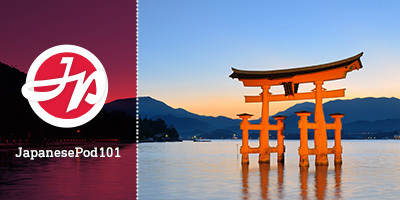Benny Lewis's Blog, page 36
October 8, 2020
47 Japanese Proverbs about Life, Love, and Wisdom to Inspire You (with English translations)
[image error]
Japanese proverbs and idioms are filled with ancient wisdom. And some of them you may have already heard and didn’t know they originated from Japan!
These Japanese proverbs are called ことわざ (kotowaza). They can come in straight-forward sayings or be as philosophical as one of Uncle Iroh’s from Avatar: The Last Airbender.
[image error]
It makes sense that everyone’s favorite Pai Sho player likes to speak wisdom through old Japanese proverbs and Chinese sayings. In fact, Iroh and the Fire Nation are based on Chinese/Japanese traditions and history.
(Plus, he was voiced by Mako Iwamatsu, a brilliant Japanese-American actor.)
If you’d like to level up your wisdom with Japanese sayings, you’ve come to the right place.
Here you’ll find tons of Japanese proverbs with English translations, to help bring out your inner philosopher.
We’ll cover:
Japanese Wisdom in Proverbs (The 3 Forms of Japanese Wisdom Sayings)Japanese Proverbs About LifeJapanese Proverbs About LoveJapanese Proverbs About FriendshipJapanese Proverbs About PerseveranceJapanese Proverbs About War and AngerJapanese Proverbs About Death
Japanese Wisdom in Proverbs (The 3 Forms of Japanese Wisdom Sayings)
There are many old Japanese sayings steeped in the country’s history, culture, and innate wisdom.
These Japanese proverbs come in three forms: 言い習わし (iinarawashi), 四字熟語 (yojijukugo), and 慣用句 (kan’youku).
Iinarawashi are short sayings and bits of wisdom.
Yojijukugo are four-character idioms. They consist of only four kanji characters to create the saying. These can be the hardest to grasp sometimes for learners.
Kan’youku are idiomatic phrases, but they’re longer than yojijukugo.
What’s the difference? I like to compare these styles of Japanese proverbs to other proverbial-styles you may know.
They’re all very similar, but with some nuanced differences.
Iinarawashi would be the proverbs most like something Iroh from Avatar would say.
Yojijukugo sound a bit more like Master Yoda from Star Wars.
And last, kan’youku are the ones that seem most like Confuscious’ style.
But really, it doesn’t matter much which style the proverbs are in. The important part is understanding their meaning, and learning from them!
Japanese Proverbs About Life
井の中の蛙大海を知らず (i no naka no kawazu taikai wo shirazu) English Translation: “A frog in a well knows nothing of the sea.”
This famous Japanese saying means someone sees the world through their limited perspective. They’re quick to judge and think very big of themselves. It’s used to remind someone that there are things bigger than them in the world.
水に流す (mizu ni nagasu) English Translation: “The water flows.”
This Japanese proverb is like the English expression “water under the bridge.” It means to forgive and forget, and let things go.
口は災いの元 (kuchi wa wazawai no moto) English translation: “The mouth is the source of disaster.”
Running our mouths tends to get us into trouble, doesn’t it? The saying is a reminder to, more or less, shut your trap. Because sometimes, it’s better to not say anything at all.
自業自得 (jigoujitoku) English Translation: “Self-work, self-profit.”
Depending on how this phrase is used, it could mean something more positive like “you get what you give” or “hard work pays off.”
But most of the time, it’s used negatively to mean “what goes around comes around”. Because karma.
知らぬが仏 (shiranu ga hotoke) English Translation: “Not knowing is Buddha” or “ignorance is bliss”
I love this Japanese idiom. It might seem confusing at first, but let me explain. Buddha here represents nirvana -- the state of enlightenment. To be in a state of enlightenment, you have to give up earthly concerns and be at peace.
So, not knowing is peaceful. Ignorance is bliss.
出る杭は打たれる (derukui wa utareru) English Translation: “The nail that sticks out is struck.”
This one is so culturally unique to Japan.
Japanese society is a collectivist country, meaning people are expected to work together for the greater good of all. While that’s a good thing, it can also lead to a lot of conformity and resistance to change.
This saying means “When you stick out, you’re likely to get criticized.” Those who try to be different in Japan often meet with a lot of resistance. So, this phrase is quite common.
花より団子 (hana yori dango) English Translation: “Dumplings over flowers” or “substance over style”
This is the name of one of my FAVORITE Japanese dramas of all time, based on the manga. It’s named that because the whole premise centers on a character who doesn’t care at all about wealth and style.
Basically, it’s someone who would prefer a practical gift over a beautiful one. Someone who is more pragmatic than superficial.
Because you can eat a dumpling and not be hungry anymore. Flowers are only to look at.
案ずるより産むが易し (anzuru yori umu ga yasushi) English Translation: “It’s easier to give birth than to think about it.”
Basically, this means “don’t worry about it.” It’s easy to stress over the future, but often what we worry so much about is easier than we think it will be.
花鳥風月 (kachou fuugetsu) English Translation: “The beauties of nature.”
This one is really interesting. The kanji each represent one beautiful aspect of nature:
花: “Flower”鳥: “Bird”風: “Wind”月: *Moon”
But together, it represents the beauty of everything around us. It serves as a reminder to enjoy the great outdoors.
二兎を追う者は一兎をも得ず。(nito wo oumono wa itto wo mo ezu.) English translation: “Those who chase two hares won’t even catch one.”
There’s an episode of Parks & Recreation (one of my favorite shows) where Ron Swanson gives some advice to Lesley Knope. He says, “Never half-ass two things. Whole-ass one thing.”

Great life advice from brilliant life philosopher, Swanson-sensei.
This proverb means the same thing. When your focus is divided, you’ll fail to succeed at either.
見ぬが花 (minu ga hana) English translation: “Not seeing is a flower,” “Reality is never as good as your imagination”
This is one of those Japanese proverbs that would be confusing to hear without context.
The idea is, you can picture how beautiful the flower will be when it blooms… But often your imagination builds up the beauty of this flower and the reality doesn’t compare.
猫に小判 (neko ni koban) English translation: “Gold coins to a cat.”**
This saying refers to giving something of value to someone who does not appreciate it. The English equivalent would be “casting pearls before swine.” I prefer the image of giving gold to a cat. No animal seems more indifferent than a cat.
Japanese Proverbs About Love
酒は本心を表す (sake wa honshin wo arawasu) English Translation: “Sake shows true feelings.”
The word 本心 (honshin) means “true heart” or “true feelings.” So this phrase means that what’s said while drinking is often how a person truly feels.
A mumbled 大好き (daisuki, “I love you”) while drinking isn’t just the sake talking!
異体同心 (itai doushin) English Translation: “Two bodies, same heart.”
When a couple gets married, it’s often said that “two become one.” That’s the same idea here!
It could be used to say someone is your soulmate or to describe the union of love.
以心伝心 (ishindenshin) English Translation: “Heart to heart.”
This yojijukugo phrase means “heart to heart” or to share your true heart’s emotions to connect with someone else.
磯 の アワビ (iso no awabi) English Translation: “An abalone on the shore” or “unrequited love”
Abalone is a type of marine snail, and they’re extremely rare. There’s a Japanese song about a man who dives in the sea looking for abalone is in a one-sided romance.
So, this phrase came to mean “unrequited love.”
恋とせきとは隠されぬ。(koi to seki to wa kakusarenu) English Translation: “Love and a cough cannot be hidden.”
Like when you’re sick and you can’t suppress a cough, love can’t be hidden. It’s always obvious when someone’s in love!
惚れた病に薬なし (horeta yamai ni kusuri nashi) English Translation: “There’s no medicine for falling in love.”
Horeta means “to fall in love”. Yamai means “disease.” And kusuri nashi means “there’s no medicine” or “there’s no cure.”
Together, it means there’s nothing that can fix love-sickness.
Japanese Proverbs About Friendship
鯛も一人はうまからず (taimo hitori wa umakarazu) English Translation: “Even a sea bream loses its flavor when eaten alone.”
Sea bream is considered to be one of the tastiest fish, and it’s often eaten whole with others as a shared family dish.
So even though sea bream is delicious, eating it alone isn’t good.
This saying shows Japan’s emphasis on shared meals with friends and family, and how it’s always better to eat food with those you care about.
八方美人 (happou bijin) English Translation: “Everybody’s friend.”
This isn’t a positive idiom, but rather, to describe someone who tries to please everyone. They try to be everyone’s friend, and so they’re not loyal to anyone.
Japanese Proverbs About Perseverance
継続は力なり。 (keizoku wa chikara nari) English Translation: “Continuing on is power,” or “don’t give up.”
Even when things get hard, pushing through leads to power and strength. That’s why this Japanese proverb means, “There’s strength in continuing on. Don’t give up.”
七転び八起き (nana korobi ya oki) English Translation: “Fall seven times, get up eight.”
This is definitely one of the most famous Japanese proverbs. You’ve probably heard the English version: “If at first you don’t succeed, try and try again.” It’s another phrase that means “don’t give up!”
猿も木から落ちる (saru mo ki kara ochiru) English Translation: “Even monkeys fall from trees.”
If monkeys can fall from trees, even the great can fail. This phrase means, “nobody’s perfect, but keep trying anyway.”
It’s perfect to tell a friend if they’re struggling with failure to encourage them to keep trying.
*明日は明日の風が吹く (ashita wa ashita no kaze ga fuku*) English translations: “Tomorrow’s winds will blow tomorrow.”
This Japanese saying means, “tomorrow’s another day” and to not worry about the future. I love this beautiful proverb -- it’s so much more elegant than the English version!
三日坊主 (mikka bouzu) English Translation: “A monk for 3 days.”
This expression describes someone who’s an inconsistent worker or lacks the determination to see something through. They’re like the person who chooses to be a monk and gives up after only 3 days.
石の上にも三年 (ishi no ue nimo san’nen) English Translation: “3 years on a stone.”
If you stay consistent and stick with it through hard times, eventually things will change. That’s the meaning behind this Japanese proverb.
Think of the stone as your strength and perseverance foundation. If you continue to sit there and stick with it, things will slowly get better.
雨降って地固まる (ame futte chikatamaru) English Translation: “When it rains, earth hardens” or “Adversity builds character”
This one especially sounds like a proverb you’d find in Avatar: The Last Airbender. In English, we have a couple of similar proverbs: “what doesn’t kill you makes you stronger” and “the calm after the storm.”
This has a similar vibe. When you weather the storm, you become stronger for it. The earth hardens after a rain, and so you will grow stronger through a difficult situation.
Japanese Proverbs About War and Anger
四面楚歌 (shimensoka) English Translation: “Surrounded by enemies.”
A yojijukugo phase, which can also have a nuance of “being betrayed by everyone around you.” Talk about being in enemy territory!
あほに取り合うばか (aho ni toriau naka) English Translation: “Only a fool deals with a fool.”
Have you heard the English saying, “Fool me once, shame on you. Fool me twice, shame on me”? Well, this Japanese saying has a bit of nuance like that.
The word aho in Japanese is stronger than the word for baka, but they both mean “idiot.” So it’s saying you’re a greater fool for trying to fight with a fool.
相手のない喧嘩はできない (aite no nai kenka wa dekinai) English Translation: “You can’t fight without an opponent.”
This proverb means basically the same thing as “it takes two to tango.” There can’t be a fight without both parties, so neither party is innocent.
悪戦苦闘 (akusenkutou) English Translation: “An uphill battle.”
This idiom can also mean “a hard fight” or “struggle” -- anything where the odds are against you, and it’ll be difficult to overcome!
猪突猛進 (chototsumoushin) English Translation: “Charge headlong.”
It’s funny because this saying is calling someone a “wild boar”. But that’s how boars act, isn’t it? They’re stubborn and charge head-first.
You may hear this one, too: 猪突猛進ガール (chototsumoushin ga-ru), or “headstrong girl.”
因果応報 (inga ouhou) English Translation: “Bad causes, bad result”, “karma” or “what goes around comes around”
The meaning of this Japanese proverb is literally “cause and effect retribution.” So, when you do something bad, bad things will happen. You know what they say about karma.
負けるが勝ち (makeru ga kachi) English Translation: “To lose is to win.”
Ever feel like it’s a lose-lose situation? Well, that’s where this proverb comes in. The wisdom it shares says that it’s sometimes better to lose and avoid worse conflict than to continue foolishly fighting.
弱肉強食 (jakuniku kyoushoku) English Translation: “The weak are meat” or “survival of the fittest”
Hardcore! This one means the same as the English saying “survival of the fittest”, but it sounds way more diabolical.
Speaking of diabolical…
極悪非道 (gokuaku hidou) English Translation: “Villany” or “diabolical”
If you break down the kanji, it literally means “very evil and outrageous.” And so, you get… Diabolical! I can hear the evil laugh now. Mwahaha…
一刀両断 (ittouryoudan) English Translation: “One stroke, two halves.”
A more natural translation would be “cut in two with one stroke”. As an idiom, it’s used to describe someone who takes decisive action.
Japanese Proverbs About Death
馬鹿は死ななきゃ治らない (baka wa shinanakya naoranai) English Translation: “An idiot can’t be cured of idiocy unless they die.”
Talk about harsh! This saying more or less means “you can’t fix stupid” but… more intense.
自ら墓穴を掘る (mizukara boketsu wo horu) English Translation: “Dig your own grave.”
There aren’t many idioms that both Japanese and English have that translate perfectly together. But I’m sure you know this one well. Like the English saying, “to put your foot in your mouth,” or to say something stupid that gets you in trouble. “Dig your own grave” is the same way and Japanese has an exact equivalent.
安心して死ねる (anshin shite shineru) English Translation: “Die in peace.”
This could be used to talk about someone who passed away at ease. Or it could describe a release of worry, like the English phrase. When a lifelong wish comes true or a big worry is solved and puts you at ease, you say “Well, now I can die in peace.”
死人に口なし (shinin ni kuchinashi) English Translation: “Dead men tell no tales.”
Someone who’s been killed can’t reveal big secrets, so that’s where this phrase comes in. Sounds like something the yakuza (Japanese mafia) might say, huh?
危機一髪 (kiki ippatsu) English Translation: “A close call” or “in the nick of time”
Almost got in an accident? Phew! “危機一髪!” That was a close call.
This has the nuance of “a close call with death” or “a close shave” but it’s also used like “just in the nick of time,” too.
疑心暗鬼 (gishin’angi) English Translation: “Suspicion will raise bogies.”
Feel like someone’s watching you? Are you “jumping at shadows”? That’s where this Japanese saying comes in. If you’re looking for demons in the dark, you’ll find them.
九死一生 (kyuushin iishou) English Translation: “Nine deaths, one life” or “near-death experience”
Like “a close call” above, this one is where you see your life flash before your eyes.
Beautiful Japanese Proverbs
I hope you’ve channeled your inner Iroh, Yoda, or other inner philosophical spirit now.
These Japanese proverbs and idioms will level up your Japanese and help you understand more nuanced parts of the language. But besides that, I hope you discovered some inspiring wisdom from these old Japanese sayings.
If you want to deep dive into the Japanese culture, read all the must-know cultural insights next. Or if you’re looking for more beauty and wisdom in the Japanese language, check out the most beautiful Japanese words every learner should know.
Which Japanese proverb was your favorite? Share it with me in the comments below!
The post 47 Japanese Proverbs about Life, Love, and Wisdom to Inspire You (with English translations) appeared first on Fluent in 3 months - Language Hacking and Travel Tips.




October 4, 2020
108 Basic Chinese Words: Essential Chinese Vocab for Beginners
[image error]
[image error]
Learning some basic Chinese words is a great way to get started with the language. After all, you can’t have much of a conversation in Chinese unless you can say beginner Chinese words like these:
你好 (nǐ hǎo) - “hello”你好吗? (nǐ hǎo ma?) - “How are you?”是 (shì) - “yes”没有 (méiyǒu) or 不 (bù) - “no” 谢谢 (xièxiè) - “thank you”
I usually recommend that language learners start with the words most relevant to them. That said, these are extremely common Chinese words and are relevant to most Chinese learners.
Here’s what we’ll be covering, so you have an idea of what’s ahead:
The 16 Most Common Chinese Greetings43 Useful Chinese Words and Phrases for Beginners35 Simple Chinese Words to Get You Around When Visiting ChinaThe 14 Chinese Words to Know to Blend in with Chinese Culture
Now, are you ready to learn what will be your stepping stone in mastering Chinese?
Read on:
[image error]
The 16 Most Common Chinese Greetings
The first things you need to master in every language are greetings. These are the basic Mandarin Chinese words and phrases to greet someone with:
你好 (nǐ hǎo) - “Hello”您好 (nín hǎo) - “Hello” (polite)好久不见 (hǎojiǔ bùjiàn) - “Long time no see”你好吗? (nǐ hǎo ma?) - “How are you?”欢迎 (huānyíng) - “Welcome”早上好 (zǎoshang hǎo) - “Good morning”早! (zǎo!) - “Morning!”下午好 (xiàwǔ hǎo) - “Good afternoon”晚上好 (wǎnshàng hǎo) - “Good evening”晚安 (wǎn'ān) - “Good night”再见 (zàijiàn) - “Goodbye”拜拜 (bàibài) - “Bye bye”回头见 (huítóu jiàn) - “See you later”慢走 (màn zǒu) - “Take care”, literally “walk slowly”祝你今天愉快 (zhù nǐ jīntiān yúkuài) - “Have a nice day”旅途平安! (lǚtú píng'ān!) - “Have a safe trip!”
43 Useful Chinese Words and Phrases for Beginners
These phrases are really useful for speaking Chinese, especially if you’re visiting China. They’re exactly what you need to know so you can get through your first conversation or while out shopping.
我不明白. (wǒ bù míngbái) - “I don’t understand”你明白不明白? (nǐ míngbái bu míngbái?) - “Do you understand?”你会说英语吗?(nǐ huì shuō yīngyǔ ma?) - “Do you speak English?”我只会说一点中文. (wǒ zhǐ huì shuō yīdiǎn zhōngwén) - “I speak Chinese only a little bit”请说慢一点. (qǐng shuō màn yīdiǎn) - “Please, speak more slowly”你可以再说一遍吗? (nǐ kěyǐ zàishuō yībiàn ma?) - “Can you repeat that?这是多少钱? (zhè shì duōshǎo qián?) - “How much is this?”太贵了 (tài guìle) - “It’s too expensive”便宜一点吗?(nǐ néng piányí yīdiǎn ma?) - “Can you make it a bit cheaper?”好吧 (hǎo ba) - “Okay, then”这是什么? (zhè shì shénme?) - “What is this?”你是哪国人?(nǐ shì nǎ guórén?) - “Where are you from?”我是……人。(wǒ shì……rén) - “I’m from…”中文...怎么说? (zhōngwén...zěnme shuō?) - “How do you say… (in Chinese)?”认识你我很高兴 (rèn shi nǐ wǒ hěn gāo xìng) - “Nice to meet you”你什么意思?(nǐ shénme yìsi?) - “What do you mean?”我是… (wǒ shì…) - “I am…”你的名字是什么?(nǐ de míngzì shì shénme?) - “What’s your name?”我的名字是... (wǒ de míngzì shì…) - “My name is…”这是什么意思?(zhè shì shénme yìsi?) - “What does this mean?”生日快乐! (shēngrì kuàilè!) - “Happy birthday!”我爱你 (wǒ ài nǐ) - “I love you”我想你 (wǒ xiǎng nǐ) - “I miss you”...在哪?(...zài nǎ?) - “Where is…?”你还好吗? (nǐ hái hǎo ma?) - “Are you alright?”发生什么事了?(fāshēng shénme shìle?) - “What happened?”是 (shì) - “Yes”没有 (méiyǒu) or 不 (bù) - “No”也许 (yěxǔ) - “Maybe”我不知道 (wǒ bù zhīdào) - “I don’t know”再次 (zàicì) - “Again”, “once again”谁 (shéi) - “Who”什么 (shénme) - “What”怎么 (zěnme) - “How”什么时候 (shénme shíhòu) - “What time”何时 (hé shí) - “When”哪里 (nǎlǐ) - “Where”为什么 (wèishénme) - “Why”非常 (fēicháng) - “Very”哇!(wa!) - “Wow!” 真 (zhēn*) - “Really”, “truly”春节 (chūnjié) - “Chinese New Year”恭喜 (gōngxǐ) - “Congratulations”
35 Simple Chinese Words to Get You Around When Visiting China
Without a doubt, understanding simple Chinese writings and signs is invaluable while in China. Being able to ask where is what (like the bathroom!) and read the sign on the door is something that you hardly do without the knowledge of basic Chinese words.
I prepared a handy list of easy Chinese words to get you around:
厕所 (cèsuǒ) - “Toilet”浴室 (yùshì) - “Bathroom”, “shower room”入口 (rùkǒu) - “Entrance”出口 (chūkǒu) - “Exit”火车站 (huǒchē zhàn) - “Train station”公车站 (gōngchē zhàn) - “Bus station”, “bus stop”飞机场 (fēijīchǎng) - “Airport”出租车 (chūzūchē) - “Taxi”车票 (chēpiào) - “Ticket (for transportation”火 (huǒ) - “Fire”救命!(*jiùmìng!) - “Help!”紧急出口 (jǐnjí chūkǒu) - “Emergency exit”逃生通道 (táoshēng tōngdào) - “Fire exit”, literally “escape route”警察 (jǐngchá) - “Police” (The number for the police in China is 110)报警 (bàojǐng) - “Call the police”医院 (yīyuàn) -- “Hospital”救护车 (jiùhù chē) - “Ambulance” (The number to call an ambulance in China is 120)消防局 (xiāofáng jú) - “Fire station” (The number for firefighters in China is 119)急救室 (jíjiù shì) - “Emergency room”药店 (yàodiàn) - “Pharmacy”医生 (yīshēng) - “Doctor”牙医 (yáyī) - “Dentist”杂货店 (záhuò diàn) - “Grocery store”市场 (shìchǎng) - “Market”超级市场 (chāojí shìchǎng) - “Supermarket”购物中心 (gòuwù zhòng xīn) - “Shopping center”餐馆 (cānguǎn) - “Restaurant”麦当劳 (màidāngláo) - “McDonald’s”咖啡店 (kāfēi diàn) - “Cafe”今天 (jīntiān) - “Today”昨天 (zuótiān) - “Yesterday”明天 (míngtiān) - “Tomorrow”好 (hǎo) - “Good”坏 (huài) or 不好 (bù hǎo) - “Bad”可口 (kěkǒu) or 好吃 (hǎochī) - “Tasty”
Staying Polite in Chinese - The 14 Chinese Words to Know to Blend in with Chinese Culture
I wouldn’t want to imply that other nations aren’t polite, but remember: when interacting with a Chinese person, you’ll need to be very respectful and polite at all times. For the Chinese, the concept of “losing face” - 丢脸 (diūliǎn) - is important and they have strong feelings about it. That’s why you’ll find that they’re usually well-mannered and courtesy is appreciated.
Make sure you remember these basic words and phrases to keep polite in China:
礼貌用语 (lǐmào yòngyǔ) - “Polite Language”, “Polite Phrases”
This common Chinese expression refers to phrases of courtesy. 礼貌 (lǐmào) means “polite/courtesy” or “manners”. Let’s hope you won’t hear this phrase from a Chinese friend: 你的礼貌在哪? (nǐ de lǐmào zài nǎ?) - “Where are your manners? / Have you no manners?”
谢谢 (xièxiè) - “Thank You”
Although the Chinese language contains many expressions which repeat the same character and a lot of times they can be omitted, it’s not likely you’ll see this particular word formed of just one character (谢). You’ll be safe sticking to 谢谢 (xièxiè) - “thank you”, but if you’re feeling extra grateful, feel free to say 谢谢你 (xièxiè nǐ) - “thank you” or 太谢谢你了 (tài xièxiè nǐle) - “thank you so much”.
If you need to be formal, 感谢 (gǎnxiè) is the one you’ll use. And if you can speak casually, use 谢了 (xièle) - “thanks” with your friends or someone your age.
对不起 (duìbùqǐ) - “Sorry”, “Excuse Me”
The formal way to say “sorry” or “excuse me”. It depends on the context, but more often than not, it’s used as “sorry”. For example: 对不起,占了你这么多时间. (duìbùqǐ, zhànle nǐ zhème duō shíjiān) - “Sorry for taking up so much of your time.”
请问 (qǐngwèn) - “Excuse Me”
This word is the one that you use when asking for attention and help. It wouldn’t be right to say it in a sentence like “Excuse me, can I pass through?”, but more like: 请问厕所在哪? (qǐngwèn cèsuǒ zài nǎ?) - “Excuse me, where is the toilet?”.
The literal translation of 请 (qǐng) is “please” and 问 (wèn) means “to ask”, so you’re asking for permission to ask someone a question or for help.
先生 (xiānshēng) - “Sir”
Same way as you would use “sir” in English, 先生 (xiānshēng) - “sir” is used in Mandarin Chinese. Add this in your sentence if you want to be polite and formal.
夫人 (fūrén) - “Madam”, “Lady”
Similarly to 先生 (xiānshēng) - “sir” above, use this word if you want to show respect to your conversational partner.
请你... (qǐng nǐ…) - “Please…, Could You…”
Like I showed you before, 请 (qǐng) means “please” and 你 (nǐ) means “you”. Again, you would ask someone to help you with something in a polite way, for example: 请你给我两张往返票 (qǐng nǐ gěi wǒ liǎng zhāng wǎngfǎn piào) - “Please, give me two roundtrip tickets. / Can I please have two roundtrip tickets?”.
别客气 (bié kèqì) or 不客气 (bù kèqì) or 不用谢 (bùyòng xiè) - “You’re Welcome”
不用谢 (bùyòng xiè) - “you’re welcome” would literally mean “no need to thank”. You’re should recognize 谢 (xiè) from 谢谢 (xièxiè) - “thank you” above.
It’s correct to say any of these phrases interchangeably, but the first two literally mean “don’t be polite / don’t be so polite”.
没关系 (méi guānxì) - “No Problem”
没 (méi) - “no / don’t” and 关系 (guānxì) - “relationship” together mean “it doesn’t matter” or “nevermind”. It’s very widely used as “no problem” or “you’re welcome”, too.
稍等 (shāo děng) - “One Moment”
It’s likely you’ll hear these two words when arriving for an appointment, speaking to a receptionist, or similar situation where you’re told to “wait a bit”.
Here’s an example: 稍等,我会让他知道你在这里. (shāo děng, wǒ huì ràng tā zhīdào nǐ zài zhèlǐ) - “Wait a moment, I’ll let him know you’re here.”
放心 (fàngxīn) - “Rest Assured”, “Don’t Worry”
Simply put, this word is used to put someone at ease; to calm them down. As always, there are different ways you can place it in your sentence, but this example is the most common use: 放心吧,我和你去. (fàngxīn ba, wǒ hé nǐ qù) - “Don't worry, I'll go with you.”
麻烦 (máfan) - “Trouble”, “Bother”
Although 麻烦 (máfan) literally means “trouble” or “bother”, and it can be used that way, it’s often found to be similar to 请 (qǐng) - “please” and as a sign of courtesy.
Look at this example sentence: 麻烦你了,你知道酒店在哪里吗? (máfan nǐle, nǐ zhīdào jiǔdiàn zài nǎlǐ ma?) - “Excuse me, do you know where the hotel is?”.
Here, 麻烦 (máfan) means “excuse me”, but also “sorry to bother you”.
打扰 (dǎrǎo) - “Disturb”, “Bother”
Similarly to 麻烦 (máfan) - “trouble” or “bother”, 打扰 (dǎrǎo) - “bother” is also a sign of courtesy.
For example: 打扰你,能不能帮我携带行李?(dǎrǎo nǐ, néng bù néng bāng wǒ xiédài xínglǐ?) - “Excuse me, could you please help me with my luggage?”.
In this sentence, 打扰你 (dǎrǎo nǐ) is “excuse me”, but literally it means “sorry to disturb/bother you”.
让一下 (ràng yīxià) - “Excuse Me (Can I Pass?)”
This final “excuse me” in Chinese is exclusively used when asking others to let you through. 让 (ràng) means “let”, “allow” or even “make way” and 一下 (yīxià)’s literal meaning is “a bit”. But in reality, it’s a bit more difficult to explain. It’s often associated with a verb of brief action, but you might need to observe how native Chinese speakers use it first to be comfortable using it yourself.
[image error]
[image error]
Ready for Your Next Steps in Learning Mandarin Chinese?
There is still a long way to master Chinese after reading this guide, but I can already tell you that knowing these words and phrases will start you off perfectly.
Make sure you check out this guide on how to say “hello” in Chinese.
If you’re looking for your next step to help you learn more of this beautiful language, check out this article about learning Chinese characters or this one about useful Chinese phrases.
Good luck and don’t forget to practice what you just learned.
下次见! (xià cì jiàn!) - “See you next time!”.
The post 108 Basic Chinese Words: Essential Chinese Vocab for Beginners appeared first on Fluent in 3 months - Language Hacking and Travel Tips.




October 1, 2020
Why I Spend Money on Language Tutors (and Why You Should, Too)
[image error]
I like to think of my language-learning journey in two parts:
Before I ever hired a tutor. After I started working with tutors.
The transformation between part one and part two was huge. I’d like to tell you exactly what happened.
In college, I decided to study Russian. I was a pretty average language student: focused and curious but shy, apprehensive about my abilities. One of my friends in class was a star student, and he casually mentioned one day that he had a private tutor at home.
My friend’s revelation piqued my interest. Maybe if I get a tutor, I can be just as good, I thought. As a college student, I couldn’t afford an in-person tutor but I did stumble upon iTalki.com. The Russian tutors on the site offered really competitive prices. I went crazy and found myself four tutors (four means I’ll be four times better than my friend, right?). I met with each of them at least once a week for an hour each.
After about a month, the difference was insane!
Talking regularly with my tutors definitely improved my Russian. However, the biggest progress was in my confidence. I wasn’t scared to talk in class anymore. I had enough conversations that I could respond to anything my teacher said, even if just to say “I don’t understand. Can you please repeat it?” At some point, the class felt too slow for my pace.
Several years later, I decided to learn Korean. I thought about my experience with Russian and opted to learn Korean with only the help of tutors on the site. Having been spoiled with personal attention, I had no interest in going back to a regular class.
Private language tutors are not cheap (though they can cost as little as $5 per hour for some languages). Here are some reasons why the investment is worth it for me.
Tutors Save You Hours of Wasted Time
Most of us are busy balancing jobs, families, friends, personal projects, sleep, and many other obligations in life. Myself included. It feels as if there is never enough time in the day.
While tutors require money from you, what they give you in return is hours and hours of your life back. Spend the money to cut down the amount of time you spend learning a language. A grammar concept you need 20 minutes to read about can be explained by a tutor in just 5 minutes. You don’t have to waste time going over topics you already know, as you will certainly have to do in a group class.
But one of the best things about a tutor is the ability to get speaking practice. My tutors save me a lot of time with this.
When I wanted to find language exchange partners, I would spend hours looking for people.
I had to send 30 messages before getting a few responses back. Of those who did reply, I then had to sit through several unproductive Skype sessions before finding a person I liked (if there were any at all). Some people wouldn’t even show up. Some would refuse to help me speak the language, only concerned about their own goals. It felt like a huge waste of my time.
If you find a great partner, it can be a phenomenal experience. However, if your partner decides to stop the arrangement, you have to go through the whole process again to find someone new!
My tutors are much more reliable and I worry less about my time being wasted. Even if our session wasn’t good, I still walk away feeling as if I have learned something. Best of all, they save me hours of headaches and disappointment I would have gotten if I looked for language exchange partners.
With a Tutor, the Focus is 100% on You and Your Language Goals
I remember a Swedish course I took in high school. The class was big with students of varying abilities (as is typical with most classes). Despite it being an intermediate-level class, we spent a lot of time relearning concepts already covered in the beginner levels. Many students simply forgot and needed a refresher. They also were working adults with families and had a hard time completing the assigned homework every week. The teacher had to make sure the class moved at a comfortable pace for them. This caused a great deal of frustration for me and was the ultimate reason I stopped attending the course.
With my tutors, the focus is always on me and what I need.
I never feel like I have to sit through something for other people. For example, when I first started learning Korean, I already knew how to read the Korean alphabet and say basic things. My tutor was able to move past that portion and onto something I didn’t know. In a regular class, it would have been nearly impossible (and quite impolite) to make such requests.
Similarly, when I took the intermediate-level Russian class in school, I fell behind. It had been a year since I finished the beginner-level course and my skill was quite rusty. Having a tutor who patiently went at my pace helped me catch up to my classmates and gain more confidence in the language.
More Choice that Traditional Language Classes - You Can Find a Tutor You Like
One of the best parts about working with tutors is you can choose who to work with. In a school, you usually don’t have a choice (or very little). Your teacher can play a huge role in your experience with the language, so wouldn’t you want to choose the right person?
Tutors vary in their educational backgrounds, teaching methods, specialties, prices, and locations. We all have different needs and one person cannot satisfy everyone. If you’re moving to Spain, you might want a tutor who can teach the dialect from Spain. Or maybe you’re looking to take a proficiency exam and would like a tutor who specializes in test prep. It’s worth the money to be able to find the right instructor best suited for your unique situation.
Having choices also lets you choose someone who gels with your personality. I have a much better experience when the tutor and I can have good conversations and share the same sense of humor.
Tutors Take Learning as Seriously as You Do
As I mentioned earlier, it’s quite challenging to find a language exchange partner who fits well with you. Since no money is involved, you’re likely to encounter people who a) will not show up to your scheduled sessions or b) leave your arrangement prematurely.
On the contrary, it’s rare for me to find a tutor who doesn’t take classes seriously. In all my years of using iTalki, I’ve had maybe one tutor who flaked on me. It’s not something I worry about because 99 percent of the people I work with have proven to be super reliable.
Taking it seriously isn’t just about attendance. It’s also about how class is conducted. Your language exchange partner may not care much about helping you learn. They may be more interested in taking as much time as possible speaking your native language. With tutors, since you are paying them, they have an incentive to help you achieve your language goals. Almost every tutor I’ve worked with has shown a lot of interest in my progress and given me confidence to continue growing.
In a group class, you will find students with varying degrees of motivation. If you are a serious learner, being in a class with casual students can be a recipe for frustration. Unmotivated learners may distract and derail the class if the teacher isn’t careful. Paying for one-on-one lessons means you can avoid the negative influence of other students on your learning experience.
How to Find a Great Language Tutor
If I’ve convinced you to take your learning to the next level and find yourself a great tutor, here are some ways you can start searching.
The first type of tutor is an in-person tutor. Classes are held at your home, the tutor’s home, or a public place. You can find them on local Facebook groups, in newspapers, or around community centers. If a school nearby teaches your target language, you can see if a teacher there would be available for tutoring. You may also look at websites such as Wyzant.com or Craigslist.org.
The second type is an online tutor. These people generally charge lower rates because they do not have the added hassle of commuting. They may also live in a place with a lower cost of living. Additionally, looking online gives you the biggest selection of tutors since you’re not limited to just local residents. Classes are usually conducted over Skype, Zoom, or another application agreed upon by you and your tutor. The most popular websites to find online tutors are iTalki.com, Verbling.com and Preply.com.
No matter where you find your tutors, keep in mind that they are not a magic pill to suddenly make you fluent. You must still spend a lot of time studying and reviewing independently. However, tutors can help accelerate your progress and put you on the fast track to fluency if you bring the dedication and hard work.
Let me know how you get on finding a tutor!
The post Why I Spend Money on Language Tutors (and Why You Should, Too) appeared first on Fluent in 3 months - Language Hacking and Travel Tips.




September 27, 2020
How Do You Say “Happy Birthday” In Italian?
[image error]
Would you like to learn how to say “happy birthday” in Italian?
Maybe you want to say “Happy Birthday” in Italian to give a smile to your Italian partner or friends on their special day. Or it might be because you’re planning a trip to Italy, and who knows if you’ll be invited to some birthday party there? There’s no such thing as an unexpected guest in Italian homes, so you might even get a last-minute invitation.
Italians are jovial people who love to celebrate and have a good time with their family and friends. Pair this with their world-famous cuisine, and you can imagine how cool it must be to attend an Italian birthday party.
Let me help you prepare for the celebrations!
How to Say “Birthday” in Italian: Compleanno
In English, the word “birthday” is made up of the nouns “birth” and “day”. In Italian, the word for “birthday” is also a compound word: compleanno.
Compleanno comes from the Spanish word cumpleaños (“birthday”). If we break compleanno down, we get comple from the Spanish verb cumplir (“to carry out”, or in this case, “to complete”) and anno from the Spanish noun año (“year”).
While in English the word explicitly describes the day of your birth, in Italian it’s the day that marks the full completion of one more year of your life.
How to Say “Happy Birthday” in Italian: Buon Compleanno
How do you say "Happy Birthday" in Italian?
“Happy birthday” translated to Italian in a literal way would be felice compleanno, as felice means “happy” in Italian.
However, Italians don’t wish a happy birthday, but a good one. They say buon compleanno (literally “good birthday”).
Buon/a replaces “happy” in many other special-event greetings.
For instanceExamples:
Buon Anno Nuovo - “Happy New Year”Buon San Valentino - “Happy Valentine’s Day”Buona Pasqua - “Happy Easter”
How to Say “Date of Birth” in Italian: Data di Nascita
“Birthday” and “birthdate” aren’t the same thing. While the first is a recurrent yearly event, the second represents the exact date when you were born, year and all. There’s only one date of birth for each of us while we have had as many birthdays as we are old.
If you’re worried about confusing the two in Italian, rest assured that it’s nearly impossible.
Like English, in Italian, data di nascita (“birthdate”) is made up of the words data (“date”), di (“of”), and nascita (“birth”). Simple!
How to Wish a Happy Non-Birthday in Italian: Buon Non Compleanno!
What if you can’t wait to wish a happy birthday in Italian, but none of your friends or relatives are celebrating theirs?
Try out the Alice in Wonderland Mad Hatter-style phrase and wish them instead un buon non compleanno (“a happy non birthday”)!
How to Say “Best Wishes” in Italian: Tanti Auguri
Buon compleanno is “happy birthday” in English, but Italians often use alternative phrases to greet the birthday person. Tanti auguri is the most popular one.
What does tanti auguri mean? If we were to literally translate it to English, tanti auguri would be “many wishes”. However, its meaning is closer to “best wishes”.
Note: As you see, tanti auguri doesn’t include the word compleanno, so it’s not only for birthdays. Actually, it’s the joker card when it comes to Italian greetings. You can use it to express your best wishes on Christmas as well as on New Years or Women’s Day.
You may also simply say Auguri! (literally “wishes”) or add the suffix -oni to make the wishes bigger: Auguroni!
How to Say “I Wish You a Happy Birthday” in Italian: Ti Auguro un Buon Compleanno
You’ve learnt that “wishes” is auguri in Italian, so it’ll be easy to remember that “to wish” is augurare.
To tell the birthday person “I wish you a happy birthday”, you would say Ti auguro un buon compleanno.
But what if you wanted to say we wish you a happy birthday to several people at the same time? Or if you wanted to express someone else’s wishes? You would have to modify the phrase accordingly.
First, let’s see how to conjugate the verb augurare, which belongs to the first group of Italian verbs.
(io) auguro - “I wish”(tu) auguri - “you wish” (informal singular second person)(lui, lei or Lei) augura - “he/she wishes” or “you wish” (formal singular second person)(noi) auguriamo - “we wish”(voi) augurate - “you wish” (plural second person)(loro) augurano - “they wish”
To complete the phrase, you have to choose the correct indirect pronoun.
io → mi (“to me”)tu → ti (“to you”)lui → gli (“to him”)lei, Lei → le, Le (“to her” or “to you”, formal singular form)noi → ci (“to us”)voi → vi (“to you”, plural form)loro → gli (“to them”)
Examples:
Vi auguriamo un buon compleanno - “We wish you a happy birthday.”Mia madre le augura un buon compleanno, signore - “My mother wishes you a happy birthday, Sir.”
Happy Birthday in Italian: Song Version
The Italian birthday song is used as much as the English one, and on the same occasions: by phone call, to begin a surprise party, before cutting the birthday cake, etc.
So, what’s the Italian birthday song like? It’s very easy to learn now that you know how to say best wishes in Italian.
Here are the lyrics. Sing with the same tune you would in English:
Tanti auguri a te, tanti auguri a te, tanti auguri, tanti auguri a te!
Note: Tanti auguri a te means “best birthday wishes to you*.
Italian Birthday Traditions
Italians celebrate birthdays in a similar fashion to many other countries, but they also have their own quirks when it comes to birthday parties.
So, let’s talk about some Italian birthday traditions.
Which is the Most Important Birthday for Italians?
Italians tend to celebrate 18th birthdays in a bigger fashion because that’s the day they officially hit adulthood!
The style and size of the party depend on the person, but it’s almost always as big as possible.
Tirare Le Orecchie
There’s an old Italian birthday tradition where the guests pull the birthday person’s ears one time for every birthday they’ve had until the one they’re celebrating.
It’s more of a joke nowadays, but if you hear someone saying that they should tirare le orecchie al festeggiato (“pull the birthday person’s ears”), you’ll know why.
There are different explanations for this tradition. One of the most popular ones is that pulling the birthday person’s ears reminds them of the passing time. This comes from an ancient belief that memory was stored in the ears.
The Birthday Person Takes Care of the Food
Chi compie, paga is a bit tricky to translate in English as compiere doesn’t have an English equivalent. The phrase means “The one who is celebrating their birthday pays.”
It may sound strange to you. How come the person celebrating treats instead of that being the friends’ responsibility? It’s hard to explain exactly.
Food’s a huge part of Italian culture, and eating and sharing high-quality food is such an important social activity. When someone celebrates their birthday, they share their appreciation for their guests by offering them food.
Parties are usually held at the birthday person’s house and the food can be served as finger-food, a buffet, or a several-courses meal. It’s not uncommon to have dinner outside, but it would usually be with only a few close friends and/or relatives. Those who don’t have the time and/or means for any of the previous two might go for a drink or a pizza.
A constant in all cases is that the birthday person, or their family in case it’s a surprise, is expected to treat.
Guests Have to Bring Gifts
Since the birthday person takes care of the party, guests bring gifts to demonstrate a matched affection. The gifts, wrapped with great care, are often opened before the party ends so the host can properly thank everyone.
Bringing gifts to your hosts isn’t only for birthdays, though. It’s a good idea to bring a little something anytime you go to someone else’s house in Italy, even if they’re a relative. If it’s not a birthday, it doesn’t have to be anything expensive, and it’s the thought that counts.
What about if you’ve been told not to bring anything? Unless it’s for a serious reason and you’re at risk of disrespecting the hosts (e.g.: at a funeral), it’s still better not to come empty-handed.
Your hosts probably won’t make a big deal about it if you don’t follow this rule, especially if they know you’re a foreigner. But bringing a gift does help you blend in with the culture.
After reading about these traditions, do you feel motivated to organize your own Italian birthday party?
Let me help you with that.
How to Say “Party” in Italian: Festa
You’ve learnt that birthday parties are popular in Italy. Now, let’s see how to talk about them in the local language.
So, how do you say “party” in Italian? The answer is festa, and “birthday party” is festa di compleanno.
There isn’t a standard recipe for Italian birthday parties, but since they’re often held at home, they can get very creative. Parents usually organize dei giochi (“games”) for young children’s parties, while adults and teenagers can opt for una festa a tema (“a themed party”). Friends and family may pull together una sorpresa (“a surprise”) or una festa a sorpresa (“a surprise party”).
Here is some party-related vocabulary in Italian to set up your festa di compleanno:
invito di compleanno - “birthday invitation”decorazione/i - “decoration/s”palloncino/i - “balloon/s”festone/i - “streamers”cappellino/i di compleanno - “birthday hat/s”coriandoli - “confettis”musica - “music”regalo - “present”pacco regalo - “gift box” or “gift wrapping”nastro - “ribbon”
Do you know what else your Italian birthday party can’t lack?
How to Say “Birthday Cake” in Italian: Torta di Compleanno
If you answered cibo (“food”) to the question above… Ding! Ding! Ding! You’re correct! As a prize, you get a virtual birthday cake:
September 24, 2020
The Ultimate Guide to Japanese Particles (with Examples)
[image error]
Japanese particles are teeny tiny bits of grammar, but they made a big impact on the clarity of your sentences. Learn Japanese particles, and you’ll have a solid foundation for Japanese grammar.
But particles can seem so confusing to Japanese language learners. Why do we need them? What is their purpose? How do you know when to use は (wa) and が (ga)? The list of questions goes on.
Japanese particles are the “glue” that holds sentences together in Japanese.
Basically, Japanese particles define what you’re talking about in a sentence. They tell you how a noun, object, or verb relate to one another. Similar to English articles “the”, “a”, and “an” and preposition words like “to”, “in”, and “on”.
So, let this be your guide to Japanese particles!
We’ll answer all your questions about Japanese sentences and when to use particles, and teach you the most “must-know” particles as you get started with Japanese.
勉強しましょう! (Benkyou shimashou, “Let’s study!”)
What are Japanese Particles? (A Brief Introduction to Japanese Sentence Structure)
First, let’s talk about Japanese sentences and their structure. Japanese sentence structure is different from English sentence structure. In English, our sentences look like this:
Subject → Verb → Object
For example: “I ate cake.”
In Japanese, sentences look like this:
Subject → Object → Verb
This means that verbs come at the end of a sentence. Take the same example:
私はケーキ―を食べた (watashi wa ke-ki- wo tabeta)
Watashi is “I”, ke-ki is “cake”, and tabeta is “ate”. So the verb is last. But notice those two extra words in that sentence: は (wa) and を (wo).
Those are particles.
Japanese sentences don’t use spaces, so particles are crucial.
The sentence means exactly the same thing as in English, but it needs those two tiny particles so it makes sense. は tells us what the subject of the sentence is. を tells us who or what is receiving the action.
Particles are especially crucial to Japanese because Japanese sentences don’t use spaces. So, when you’re reading a longer sentence, those particles help tell you where a word begins and ends, and what it’s role is in the sentence.
Let’s take a look at a longer example:
昨日の夜は勉強しながらテレビを見ていたので、あまり集中していませんでした。 (Kinou no yoru wa benkyou shinagara terebi wo mite ita node, amari shuuchuu shite imasen deshita.) “I was watching TV while studying last night, so I wasn’t very focused.”
When you look at a long sentence like that, at first glance, it appears to run together a bit. That’s why you need to look for the particles. I’ve highlighted them below:
昨日の夜は勉強しながらテレビを見ていたので、あまり集中していませんでした。
Besides some grammar patterns in there that also distinguish what’s what, the particles are essential to understanding that sentence and making it readable.
Okay, now you know Japanese sentence structure and the importance of particles within them. Now, let’s learn when to use Japanese particles.
When to Use Japanese Particles
Japanese grammar particles are used whenever you need to connect to words together. Each particle has its own meaning, and we’ll get to that in a moment.
In English, we say “my dog.” In Japanese, there is no “my” there is only “I + possessive particle”
My dog 私の犬 (watashi no inu)
Without the particle の (no), it would read as “I dog.” Sounds like Tarzan-speak for saying you’ve become a dog, right?
の clarifies that the noun has become possessive.
All particles play this kind of role. You have subject markers, object markers, possessive particles, directional and location particles, time particles and more.
Want to know if you need a particle? Break down the sentence and see if it sounds like “Tarzan speak”.
More often than not, you need a particle between nouns and other nouns, nouns and verbs, and objects and verbs. Sometimes you’ll also need particles between adjectives and adverbs or to end sentences.
If you’re not sure if you need a particle, break down the sentence. If it sounds like Tarzan-speech by translating it directly, you most likely need to add a particle for clarification.
If this seems confusing, don’t worry. You already do this in English! We just call them prepositions, usually. We go to the store or ask for something. So you’ll get used to it in Japanese, too.
Particles get a bit nuanced as you progress because casual Japanese drops particles an awful lot. To understand which particles can be dropped and which ones can’t, you have to have a good understanding of how particles function. So, don’t worry about that for now. Just know you may hear others drop particles on occasion, but as a learner, you should still keep using them.
All The Japanese Particles You Need to Know: Japanese Particles with Examples
There are a lot of Japanese particles -- 188, in fact.
Japanese has 188 particles in total -- but you don’t need to know all of them as a beginner!
So many, that all the Japanese particles and their uses would be a whole textbook in and of itself. So, I won’t be covering all 188 of them here, but I will be covering all the ones you must know to start speaking Japanese now.
Japanese Subject Marker Particles: は (wa) and が (ga)
In English, we have only a “subject” as the main focus of the sentence. In Japanese, they divide it by subject and topic. This gets confusing when trying to translate into English because English doesn’t differentiate the two. This makes it extremely difficult for English speakers to know when to use は (wa) and when to use が (*ga).
One of the best breakdowns of this I’ve ever seen is in this post from FluentU about particles. They explain it like this: in English, we only see oranges. In Japanese, they see tangerines and mandarins. That’s so perfectly put.
How to Use は (wa)
Let’s look at は (wa) first. は is actually the hiragana character read as “ha.” But as a particle, it’s read as “wa.” Keep that in mind.
は is actually the topic maker particle in Japanese, but we would more associate it as a subject marking particle in English. That’s because, in Japanese, the subject is almost always dropped.
For instance, “I like sushi” is 私は寿司が好きです (watashi wa sushi ga suki desu). But if you’re talking to someone, and they ask “Do you like sushi?”, well, the subject is already known. They know your answer is about you. So you would just say うん、寿司がすきです (un, sushi ga suki desu, “Yes, (I) like sushi”). You don’t need “I”.
は can also be used as a contrasting particle, to put emphasis on the noun or topic you prefer over something else. But that’s a topic for later because it can become quite confusing to a beginner trying to learn the difference between は and が.
How to Use が (ga)
が (ga) is also a subject-marking particle, but it’s almost never dropped. It’s important for many reasons.
In the sentence we just used as an example, you may have noticed that が was also present! Let’s look at it again:
(私は)寿司が好きです。 ([watasahi wa]) sushi ga suki desu)
Since we don’t need watashi wa because it’s clear I’m talking about myself, then sushi actually becomes the subject of this sentence. We use が here to emphasize that sushi is the thing we like.
If you’re going to use it with a verb, the verb needs to be in dictionary/infinite form and you need to add の (no). Here’s what that looks like:
運動するのが好きです。 (undou suru no ga suki desu.) “I like exercising.”
の functions as a normalizer for the verb, turning “exercising” into a noun. が still plays its role of letting us know that exercising is what we like to do.
が also connects sentences to mean “but” or “also”.
食べ過ぎたが、まだ甘いものがほしいです。 (tabesugita ga, mada amaimono ga hoshii desu.) “I ate too much, but I still want something sweet.”
Here, we have two が particles, but they play different roles. The first が connects two thoughts: “I ate too much. I still want something sweet.” It makes it sound more natural by adding “but” to connect them. The second が is the subject marker. It lets us know that what we want (hoshii) is something sweet to eat (amaimono).
Lastly, が is used to emphasize or correct who the subject of a sentence is. For instance, if someone asked my friend, “Are you Caitlin?”, I could correct them with が. Take a look:
知らない人(友達へ): ケイトリンですか。(Shiranaihito (tomodachi e): Keitorin desu ka) 私: 私がケイトリンです。(Watashi: Watashi ga Keitorin desu)
Stranger (to my friend): “Are you Caitlin?” Me: “I’m Caitlin.”
が is one of the most versatile particles, but these are its main functions you’ll come across often.
Japanese Question Marker Particle: か (ka)
か (ka) is so simple. In Japanese, it works as the ? at the end of a sentence. So you can change any sentence to a question by adding か to the end.
映画に行きます。行きたいですか。 (Eiga ni ikimasu. Ikitai desu ka.) “I’m going to a movie. Would you like to go?”
In spoken Japanese, you raise the intonation at the end of the sentence to make it a question like you would in English. When speaking formally, you always use か at the end. But when speaking to a friend, you can drop か and only use a higher intonation to mark it as a question.
In writing, it’s becoming more common to drop か and use ? when writing casually. But if you’re writing formally, you’ll still use か as the question mark and end with the Japanese period 。
Japanese Direct Object Marking Particle: を (wo)
を is romanized as wo but is actually said as “o”. It’s used to mark the direct object of the sentence, the object that receives the action of the verb. Like all particles, it comes after the word it’s marking.
晩ご飯を食べた。 (Bangohan wo tabeta) “I ate dinner.”
Here, を is marking 晩ご飯 (bangohan, “dinner”) as the thing we ate (tabeta).
Japanese Possessive Particle: の (no)
We already talked about this one a bit, but let’s review it more in-depth.
の (no) is the possessive particle. It turns pronouns into their possessive form.
私の本 (watashi no hon) “My book”
さくらちゃんの猫 (Sakura-chan no neko) “Sakura’s cat”
But の is also used to connect to related nouns. For example, if you want to say you’re a student of Tokyo University, you’d use の like this:
東京大学の学生です。 (Toukyou daigaku no gakusei desu) “I’m a student at Tokyo University.”
In Japanese, you’re a student belonging to Tokyo University. Since the university is where you belong (where you attend), it gets the possessive particle の to show the connection.
の can also be used to drop a redundant word that’s already been clearly stated. Like so:
友達: 誰の本ですか。(Tomodachi: Dare no hon desu ka) 私: さくらちゃんの。 (Watashi: Sakura-chan no)
Friend: “Whose book is this?” Me: “Sakura’s.”
の is often used to replace the name of the noun, and just mean “it” or “this”.
私: ねえ、別のカップが必要です。一つの渡してください. (Watashi: Nee, betsu no kappu ga hitsuyo desu. Hitotsu no watashite kudasai) お姉ちゃん: どれの? (Oneechan: Dore no?) 私: 赤いの。(Watashi: Akai no.)
Me: Hey, I need another cup. Please pass me one. Older sister: Which one? Me: The red one.
You can see here that の is used several times as “one”. We already know that I need a cup, so instead of repeating カップ (kappu) over and over, we use の instead.
There are so many uses for this particle as well, and if you’d like a more in-depth explanation, check out this lesson from Tae Kim.
Japanese Movement and Time Marking Particle: に (ni)
に (ni) can mean “to”, “at”, “for”, and typically marks movement toward a location, the time, or an indirect object.
Let’s say you’re setting a time to meet up with a friend. You would use に to mark the time you want to meet.
十時半ぐらいに会いましょうね。 Juujihan gurai ni aimashou ne. “Let’s meet around 10:30.”
The に particle comes after the time, in this case, “around 10:30” (juujihan gurai). You can use this for any time, such as months, years, etc. Not just hours of the day.
に is also used as the particle to express a location to which you’re going.
学校に行っています。 Gakkou ni itte imasu. “I’m going to school.”
As you can see, this time に is marking “school” (gakkou) as the place we’re headed to (itte imasu). You can also use it with the verb “to come” which is 来る (kuru), and other travel-related verbs.
学校に来ます。 Gakkou ni kimasu. “Come to school.”
日本に旅行するつもりです。 Nippon ni ryokou suru tsumori desu. “I plan to travel to Japan.”
The above examples are probably the most common uses of に. But you’ll also see it marking the indirect object of a sentence.
(私は) さくらちゃんにプレセントを上げました。 (Watashi wa) Sakura-chan ni puresento wo agemashita. “I gave Sakura-chan a present.”
We use に here because Sakura is the indirect object. The present received the action from the verb, so it’s marked with を (wo). I’m the one doing the action, marked by は (wa). But Sakura received the present from me, so she’s marked by に (ni).
Japanese Directional Particle: へ (e)
へ (e) also marks movement and direction, and translate as “to” as well. In fact, へ and に are used almost interchangeably when talking about going “to” a place.
The biggest difference is that へ is a bit more formal, like saying “I’m going towards a place” instead of “I’m going to a place.”
学校へ行っています。 Gakkou e itte imasu. “I’m going to/toward school.”
Plus, へ combined with の is used talk about metaphorical movement.
最後に正しい方向への向かっています。 Saigo ni tadashii houkou he no mukatte imasu. “Finally, I’m heading in the right direction (in life/career/etc.).”
“Also” or “Too” Particle in Japanese: も (mo)
も (mo) is used to say “also”, “too”, or “both”. You’ll often swap out another particle for this one.
私もスターウォーズが大好きです。 Watashi mo suta-wozu ga daisuki desu. “I also love Star Wars.” or “I love Star Wars, too.”
友達: ハリーポッターまたはスターウォーズが好きですか? (Tomodachi: Hari- potta- mata wa suta-wozu ga suki desu ka?) 私: ええええ? どうすれば選ぶ?!ハリーポッターもスターウォーズも大好きだよ。(Watashi: Eeeeeh? Dou sureba erabu?! Hari- potta- mo suta-wozu mo daisuki da yo.)
Friend: Do you like Harry Potter or Star Wars? Me: Whaaaaat?? How could I choose?! I love both Harry Potter AND Star Wars.
In this case, you use も after both things.
Particle for “And” in Japanese: と (to) or や (ya)
When talking about two objects, you use the particle と (to).
犬と猫がかわいいね。 Inu to neko ga kawaii ne. “Dogs and cats are cute, aren’t they.”
But if you want to talk about many things, especially listing a few things from a long list, you’d use や (ya). This particle lets the listener know you’re listing some things, but not all of them, so it’s an incomplete list.
犬や猫やうさぎがかわいいね。 Inu ya neko ya usagi ga kawaii ne. “Dogs, cats, and rabbits (among others) are cute, aren’t they.” (Kind of nuanced here like: “Fluffy animals such as dogs, cats, and rabbits are cute.”)
Particle for “But” in Japanese: でも (demo)
There are actually several ways to say “but” depending on context and meaning.
We already talked about how が (ga) can be used as a particle to connect sentences with “but.”
Many times though, you’ll hear でも as “but”. This “but” though is a bit stronger, and more used to emphasize what comes next, rather than to connect to sentences.
昨日は夕食が本当に好きでした。でも、この食事は最高です! Konou wa yuushoku ga hontou ni suki deshita. Demo, kono shokuji wa saikou desu! “I really liked dinner yesterday. But, THIS meal is incredible!!”
Particle for “Or” in Japanese: または or か+それとも
または (mata wa) means “or” and you place it between two objects in a sentence to give an option.
コーヒーまたはお茶を飲みたい? Ko-hi- mata wa ocha wo nomitai? “Want to have coffee or tea?”
That said, the particle か (ka) can be used to say “this or that”.
これかあれ? (kore ka are?) “This one or that one?”
か (ka) + それとも (soretomo) is usually used to say “this or that” by connecting two questions together.
買い物に行くべきですか、それとも家に帰って勉強するべきですか。 Kaimono ni iku beki desu ka, soretomo ie ni kaette bekyou suru beki desu ka. “Should I go shopping or go home to study?”
Japanese Particles Cheatsheet: List of all Japanese Particles Mentioned Here
Finally, here’s a handy cheatsheet to summarize what you’ve learned and help you figure out which particle you need to use.
Particle:
Grammatical Function:
Usage:
Example:
は (wa)
Topic marker
Marks the person expressing their thoughts or doing the action.
私は寿司が好きです。
Watashi wa suki desu.
が (ga)
Subject marker, emphasis, or "but"
Marks the subject of the sentence, adds emphasis or corrects a statement, or connect two sentences with "but"
食べ過ぎたが、まだ甘いものがほしいです。
Tabesugita ga, mada amaimono ga hoshii desu.
か (ka)
Question particle
Is used in place of the ? in English.
映画に行きます。行きたいですか。
Eiga ni ikimasu. Ikitai desu ka.
を (wo)
Direct object particle
Marks the direct object that receives the action from the verb.
晩ご飯を食べた。
Bangohan wo tabeta.
の (no)
Possessive particle
Turns a pronoun into a possessive form, "belonging to", or generic noun "this one"
さくらちゃんの猫。
Sakura-chan no neko.
に (ni)
Movement, time and indirect object particle
Means "to", "at", or "for"
学校に行っています。
Gakkou ni itte imasu.
へ (he)
Directional particle
Meaning "to" or "towards"
学校へ行っています。
Gakkou he itte imasu.
も (mo)
Inclusive particle
Means "also", "too" or "both"
私もスターウォーズが大好きです。
Watashi mo suta-wozu ga daisuki desu.
と (to)
Connecting two objects
Used as "and"
犬と猫がかわいいね。
Inu to neko ga kawaii ne.
や (ya)
Connecting two or more objects from an incomplete list
Used as "and" for an incomplete list of examples
犬や猫やうさぎがかわいいね。
Inu ya neko ya usagi ga kawaii ne.
でも (demo)
"But"
Stronger than が, and used for emphasis
昨日は夕食が本当に好きでした。でも、この食事は最高です!
Konou wa yuushoku ga hontou ni suki deshita. Demo, kono shokuji wa saikou desu!
または (mata wa)
"Or"
Used to give a selection between two nouns
コーヒーまたはお茶を飲みたい?
Ko-hi- mata wa ocha wo nomitai?
か (ka) + それとも (*soretomo*)
"This or that"
Used to ask "this or that" by connecting two questions
買い物に行くべきですか、それとも家に帰って勉強するべきですか。
Kaimono ni iku beki desu ka, soretomo ie ni kaette bekyou suru beki desu ka.
Ditch Tarzan-Speak and Start Speaking Real Japanese Like a Native
It all starts with Japanese particles. These seemingly small words make or break how your Japanese comes across, so master these on this list, and you’re well ahead of the game.
Now that you’ve learned about particles, what’s your next Japanese focus? Will you learn more about Japanese culture? Focus on the basics of Japanese grammar conjugation? Or have some fun with Japanese slang and onomatopeoia? The Japanese language world is your oyster.
Got questions about Japanese particles? Leave a comment below!
The post The Ultimate Guide to Japanese Particles (with Examples) appeared first on Fluent in 3 months - Language Hacking and Travel Tips.




September 20, 2020
GermanPod101 Review – 25 Hours with GermanPod101
[image error]
GermanPod 101 Review summary: I found GermanPod101 to be an excellent German course, as long as it’s used in the right way. Read on, and I’ll show you exactly how I used GermanPod101 to learn conversational German in 90 days.
Introduction
GermanPod101 is one of the many online language courses Innovative Languages offers. In this review, I’ll detail what this course provides and how to get the most out of your time spent using this resource.
I used GermanPod101 as my main resource for learning German over a period of 90 days, and I kept video updates along the way.
Scroll down to see my German Day 0 video and my German Day 90 video. I’ve even made a walk-through video on how I used GermanPod101.
Now it wasn’t a foregone conclusion that I would enjoy using GermanPod101, or that I would find it useful.
I tried FrenchPod101 a few years ago, and while I liked the course, it didn’t quite work for me.
Coming back to use GermanPod101, and having a lot of success with it, I realized I had previously used Pod101 incorrectly.
With GermanPod101 I felt like Dorothy from the Wizard of Oz. FrenchPod101 was in “black and white” (this is because of how I used it, not because of the course).
GermanPod101 was my technicolor experience of the wonderful land of Pod101 and the German language. In this article, I’ll explain how to get the most bang for your buck. We want you going straight to technicolor.
In short, I found GermanPod101 to be an excellent course, as long as it’s used in the right way. And I’ll show you exactly how to use it in this article.
[image error]
GermanPod101 Review: What Is German Pod101?
GermanPod101 a series of online courses that take you from beginner to advanced level. It’s not just one course. It’s hundreds of lesson tracks. Each one has a different theme.
I found the three-minute German lessons to be one of my favorites.
[image error]
Inside GermanPod101, you’ll find a number of essentials. There are four options for studying with GermanPod101 ranging from free (yes, free!) to Premium Plus (the “ruby slippers” version). Here are some of the tools you can choose:
Concise audio and video lessonsSpaced repetition flashcards (spaced repetition is one of the most effective ways to learn, though flashcards aren’t usually my favorite. More on that later)Numerous word lists for specific themes and even seasonsSlowed down audio options and line-by-line audio and transcriptsPractice-and-compare voice recordingsPersonalized guidance from your own instructorIndividually assigned program from your tutorWeekly assignments to keep your learning on trackVoice recording conversation and feedback from a native speaking tutorInteractive lesson quizzesGerman audio dictionaryOngoing professional assessmentAssignmentsWord of the day emails - my favorite free tool from this company
My Spontaneous German Mission
I decided to have a three-month fling with German. My husband and I planned a trip to Austria. What started as a fun experience to get excited about our trip turned into full-on lockdown (Coronavirus is the new Wicked Witch!).
I decided to learn German on a whim, and GermanPod101 made it easy and accessible.
A bit about me. I’m Elizabeth, a language learning enthusiast. In the past three years, I have learned French and Spanish to varying degrees. So, was hard for me to resist a chance to dabble in a fourth language. When I told my boss that I was learning German, he scratched his head.
Boss: Aren’t you learning Spanish? Me/Language Addict: Yes but I’m traveling to Austria this summer. I thought it would be fun to take a stab at German. Boss/Enabler: Would you like to try GermanPod101 and write about how it works for you? Me/Language Addict: Absolutely!
Flash forward to three weeks in…
Husband: What are your plans tonight? Me: I’m up for chillaxing with you. Husband: Ohhh. What do you have in mind? Me: Well, reviewing German grammar is a great way to mellow out. Husband: What have you done with my wife?!
It’s true. I was never much of a grammar nerd but GermanPod101 made it easy and accessible. Enough about my relaxation techniques. Let’s get into the review.
Here’s What a Typical GermanPod101 Lesson Includes:
There’s so much available through this course that it’s hard to fit everything into this article. So, let’s start by listing what each lesson includes. Then I will walk you through how I studied with this course and the progress I made.
Audio and/or Video Lesson: This is where one or two native speakers explain important key concepts of German. Often, the two speakers act out a dialogue as it would be spoken in everyday life. Next, they break the vocabulary down for pronunciation practice. Then, they explain essential grammar points. Finally, they wrap up with the dialogue once more. This way, you can see how much German you learned.
In-Depth Lesson Notes: The notes discuss grammar points further. There are also lesson transcripts available. As a visual learner, I found this quite helpful.
Line-by-Line Audio Dialogue: This section is offered at the top of the notes section. This is for those that would like to listen to just the dialogue a few times while reading what’s being said. This is helpful for building your listening skills.
How I Tested GermanPod101 Before Writing This Review
I used GermanPod101 solely on my laptop but it is available on Android, iPhone, or iPad. With FrenchPod101, I used the course more like a podcast for my commutes. That was certainly useful but I recommend using it on both your phone and laptop. Sitting down with a dry erase board and a little focus made a huge difference.
I planned to use GermanPod101 for 10 hours to prepare for this review and ended up hitting 25 hours (and counting).
I committed to 10 hours of using GermanPod101. During that time I tried out all the available features. I ended up using it more than I had expected. According to GermanPod101’s dashboard, I studied 25 hours with the course. I completed 68 lessons and reviewed 1441 flashcards.
Having statistical information at your fingertips can be quite motivating. The dashboard acts as a mirror to how well you're doing. It’s useful to give yourself a weekly goal. With the dashboard tally, you can easily keep track of your progress.
Over 1400 Flashcard Reviewed!
That’s saying a lot as I abhor flashcards. Being the good girl from Kansas (not from Kansas but sticking with the Oz theme), I kept an open mind. I found GermanPod101 flashcards less nauseating than other flashcards I’ve used. Both electronic and paper-based.
Making flashcards was a cinch. I would simply click on the words I found necessary in the lesson. The wizard then created a batch specifically for me. There were multiple word lists that you could use
It’s easy to create flashcards that focus on the German words that you want to learn, and that you think you’ll use when you start speaking German.
I chose a restaurant vocabulary list. As my wise co-worker suggested, I did not study all the vocab. Instead, I made sure to delete any words I didn’t see myself using actively in the coming three months.
There are functional lists like “ways to say thank you.” There are also a few fun lists like Star Wars vocabulary. The “top ten questions you should know for conversations” list seems like a great one, too.
GermanPod101 as a Main Resource
GermanPod101 was my main resource for my German mission. I made a goal to study one lesson per week. I ended up doing more than that because the lessons were engaging. German seemed not only possible but fun!
GermanPod101 touches on the four pillars of language learning:
Listening to German natives speaking as normal speedReading dialogue conversations as well as word/phrase flashcardsSpeaking to your personal tutor via voice messages and receiving spoken feedback from themWriting to your personal tutor and obtaining supportive corrections
You can work through all the lesson tracks by yourself. To make the most out of GermanPod101, be sure to combine it with a weekly lesson or conversation. A tutor or language exchange partner will complement this course.
Sharing voice messages with your GermanPod101 tutor is an easy way to get speaking practice without the pressure of a conversation.
The voice messages with your personal tutor is a great way to start practicing speaking without the pressure of a face to face conversation. Once you are ready to take the plunge, develop a relationship with a native speaker.
The Innovative Languages courses are currently 34 languages available. One language buddy told me she uses the Pod101 courses for their lesser learned languages like Hungarian. I list all 34 at the bottom of this article along with links to visit them.
GermanPod101: My Level of German at the Start
Because GermanPod101 was my main resource, the videos of my progress have a lot to do with this course. Here’s where I was when I first started German.
httpvh://www.youtube.com/watch?v=CJkmdl50SMk
My level of German was that of a novice when I started. In the video above, you can clearly see that. I knew maybe four words. It was if I had stepped right out of Auntie Em’s house. Unlike Spanish and French where I was familiar with their cognates, German was a new land.
So, what did I do? I followed the Yellow Brick Road (also known as the beginner lesson track.)
What did I think of GermanPod101?
GermanPod101 Is an Excellent Main Resource
As I mentioned before, I was elated to learn German for three months. My rocky relationship with FrenchPod101 made me wary of GermanPod101. But now, I recommend using the Pod101 course on your cell but make that a supplement.
If you want to use GermanPod101 on your cellphone, I recommend you download only your five most recent lessons. Listen to them during your commute, in the school pick-up line, or during your exercise routine is a fabulous way to fit more German into your daily routine. One friend listens to SpanishPod101 in the shower.
Hey, whatever works!
Now that I’ve given GermanPod101 a solid try, I can see how even a brainless scarecrow could learn German. All you need is a little c-c-c-courage to try it out. (Two Oz references in one paragraph. I am on a roll!)
The best news? Compared to many other language courses out there, GermanPod101 is easy on the pocketbook. I mean, you can’t beat free. The plans range in price.
Free is, well, freeBasic is $4 per monthPremium is $10 per monthPremium Plus is $23 per month
Here’s a glimpse at some of what is offered in each plan.
[image error]
GermanPod101 Review: What I Loved
Three positive things stand out.
1. Low-Pressure Tutoring Is Great for First-time Learners
I am not shy. I don’t care how silly I sound when I try out words. A lot of times, my tutors and I have a laugh at my hilarious mistakes. Even so, I do get nervous when speaking my target language.
Many of the language students I coach in the Fluent in 3 Months Challenge are more reluctant. They quiver at the thought of speaking in their target language. The option to speak with a tutor via voice messages is a great way to start speaking.
It reduces the friction as James Clear explains in his book Atomic Habits. You start by leaving simple messages. As your confidence grows, you begin to have interesting exchanges with your GermanPod101 tutor.
I enjoyed my voicemail conversations with my tutor. It was encouraging to see a notification telling me that my tutor left me a message. I couldn’t believe someone could understand the strange new sounds coming out of my mouth.
2. GermanPod101’s Customer Service Is Exceptional
I’ve heard this from more than one person and it’s true. The customer service at Innovative Languages goes above and beyond. I remember having trouble uploading an episode to my phone while using FrenchPod101. The customer service representative was prompt, friendly, and efficient.
The customer service at GermanPod101 is excellent.
With a background in customer service, this makes my heart sing. A nice person on the other end of the line is delightful. Innovative Languages does everything it can to keep its customers happy.
3. The Variety of Lessons Is Unparalleled
The amount of material available in GermanPod101 is unbelievable. If you use GermanPod101 regularly, you will be speaking German in no time. It happened for me.
Here’s a video showing my progress after 90 days:
httpvh://www.youtube.com/watch?v=d6Jj_Tn4Ocw
GermanPod101: What I Didn’t Like
The amount of information offered in the GermanPod101 is amazing and overwhelming. With my history of not fully utilizing FrenchPod101, I realize that I missed out.
It takes a little while to find your way around and can be difficult to work out where to start.
Currently, you have to scroll to the bottom of the page and click “First Steps” under Help Center. This is hard to find. I’d like to see a bright button at the top of the page that says something like, “Start Here!” This would help students who are unsure of what to do.
Three clear student tracks laid out at the top of the page would be valuable. A list of suggested tasks - low key learning, medium level learning, and hard-core learning.
Here’s Exactly How I Used GermanPod101
To be sure you don’t miss out on the essential stuff, I made a video. It’s about how I used GermanPod101 to learn German in three months. At the end of my mission, I was able to have a 15-minute conversation completely in German. I show you exactly how I used this course to obtain my goal. For now, you can use this video as a road map.
httpvh://www.youtube.com/watch?v=Nd-TMW8ypqk
How Do I Rate GermanPod101?
As Dorothy would say, “There’s no place like GermanPod101.” While you can’t just click your heels together and be fluent in German, GermanPod101 is very much like Glinda, the Good Witch. It helps you find the magic you had all along.
I give GermanPod101 4.5 stars overall. 5 stars as an affordable main resource for beginners and intermediate learners. 4.5 stars for varied and useful material. 4 stars for the ease-of-use. (I took off half a star to account for the detailed instructions I’d like to see.)
GermanPod101: Final Thoughts
After 25 hours with GermanPod101, I feel confident in recommending it to other students.
My German tutor was amazed at the quick progress I made with GermanPod101.
One of my favorite memories of using this course was when I had my first lesson with a German tutor (this was a private tutor, not from GermanPod101). She was amazed that I already had a handle on German word order. This was after only one week of learning German with GermanPod101. It’s always fun to dazzle a native speaker.
Who knows! This course might be a perfect fit for you. The Wizard of GermanPod101 will get you speaking in no time. And the cost is reasonable. So, why not give it a try?
[image error]
After all, it’s Toto approved!
Most popular languages:
Other languages in alphabetic order:
The post GermanPod101 Review – 25 Hours with GermanPod101 appeared first on Fluent in 3 months - Language Hacking and Travel Tips.




September 17, 2020
30 Korean Phrases for Beginners and Travelers
[image error]
Preparing for a trip to South Korea? The best way to get ready is to learn a few common Korean phrases before you go!
Why should you learn some basic Korean greetings and words? Because it will help you get the most from your travels! It’s amazing what doors open when you learn a few essential travel phrases.
A lot of Koreans aren’t very comfortable with English, and they know that it’s difficult to speak their language. But that means they’ll be more patient and understanding and appreciate your efforts. So you don’t have to be nervous about trying!
Besides that, you’ll have more opportunities to connect with Korean people. You can make new friends and experience South Korea more like a local and less like a tourist.
So here’s what we’re going to cover below:
Essential Korean greetings and phrasesCommon Korean phrases for getting aroundInformal Korean phrases and slang
I’m confident you can learn these phrases with ease and make the most of your adventures in Korea!
I’ll first list the phrases as a “quick guide”, then I’ll go in-depth on when to use the phrases.
A quick note here: I’ve included the Hangul, the Korean writing system, so you can get used to seeing the language. If you’re only learning Korean for a quick trip, don’t worry about this too much. Focus on speaking. But if you’re learning Korean because you want to become fluent, then you need to learn how to read Hangul! Check out this article for how to read and write Korean Hangul.
Now, let’s learn Korean. 공부하자! (gongbuhaja, “Let’s study!”)
Korean Phrases - Quick Guide
“Hi” - 안녕하세요 (annyeong haseyo)“Nice to Meet You” - 반갑습니다 (bangapseubnida)“My Name is…” - 제 이름은... (je ileum-eun)"Yes" - 예 (ye)"No" - 아니 (ani).“Bye” - 안녕 (annyeong)“Good Morning” - 좋은아침이에요 (joeun achimieyo)“Goodnight” - 안녕히 주무세요 (annyeonghi jumuseyo)“Please” - 주세요 (juseyo)“Thank You” - 감사합니다 (gamsahabnida)“Excuse Me” - 실례합니다 (sillyehabnida)“I’m Sorry” - 미안해요 (mianhaeyo) / 죄송해요 (joesonghaeyo)“Okay” - 괜찮아요 (gwaenchanayo)"Left" - 왼쪽 (oenjjok)"Right" - 오른쪽 (oleunjjok)Straight - 직진 (jigjin)“Please go to...” - ...(으)로가주세요 ((eu)lo gajuseyo)“Where is…” - ...이어디예요 (i eodiyeyo)“I don’t know” - 몰라요 (mollayo)“I want to speak in Korean” - 한국어를하고 싶습니다 (Hangukeo-leul hago sipseubnida)“Please speak slowly” - 천천히 말씀해 주세요 (cheoncheonhi malsseumhae juseyo)“The menu, please” - 메뉴주세요 (menyu juseyo)“Bill, please” - 계산서주세요 (gyesanseo juseyo)“I have an allergy to…” - ...알레르기가 있습니다. (alleleugiga issseubnida)“How much is it?” - 얼마에요? (eolmayeyo)Do you have…” - ...있어요? (isseoyo)“What’s Up?” - 요즘 어때? (yojeum eottae)“Awesome” - 대박 (daebak)“One with the Force” - 포스 있다 (poseu itda)
Essential Korean Greetings and Phrases
Now for more details on the above phrases. Let’s begin with the essentials. If you learn nothing else from this list, this section here will be most helpful to you during your travels. That’s because these phrases will help you be polite, respectful, and kind. So these are #1 priority!
“Hi” in Korean - 안녕하세요 (annyeong haseyo)
In Korean, the phrase 안녕하세요 (annyeong haseyo) is a polite way to greet anyone.
But -- funny story. I learned “hi” in Korean from watching Arrested Development. But on the show, they just say 안녕 (annyeong).
That’s become 안녕 is the informal version, and is more casual. There are actually many ways to say “hi” based on formality, and there are more tiered levels of respect than we have in English. (I explain this more in this article about how to say “hello” in Korean if you want to know more.)
But if you’re ever unsure which to use, 안녕하세요 (annyeong haseyo) is the way to go.
“How are you?” In Korean - 어떻게 지내세요? (eotteohge jinaeseyo)
You can also use 안녕하세요? (annyeong haseyo?) to ask “How are you” in Korean, to which you would get a yes or no reply. That’s because 안녕하세요 (annyeong haseyo) literally means “are you at peace?”
But 어떻게 지내세요? (eotteohge jinaeseyo) is a bit deeper. It’s asking if your friend is really okay, how they’re really doing.
“Nice to Meet You” in Korean - 반갑습니다 (bangapseubnida)
When you meet someone for the first time, it’s polite to use the phrase 반갑습니다 (bangapseubnida) to say “nice to meet you.” Note here that the romanized version says bangapseubnida. But in reality, the “b” is pronounced more like an “m.” Bahn-gahp-suem-knee-dah.
This is the most common way to hear it. But there is a more polite version: 만나서 반갑습니다 (mannaseo bangapseubnida) This longer version only makes it more formal.
There’s another similar phrase that you’ll often hear when you meet someone for the first time. This phrase is 잘부탁드립니다 (jalbutag deurimnida). It doesn’t translate well into English, but it means something like “please look after me” or “thank you, please take care of it.” It’s used in many ways, but these are the two main uses.
The first usage is meeting someone for the first time and asking them to “please look after you”, as in, please keep in contact and have a good relationship.
The second usage is when you ask a favor of someone, and you ask them to handle it with care. It’s like “Thanks, I’ll leave it to you.”
Either way, if you say 반갑습니다 (bangapseubnida) to someone, they’ll likely respond with 저야말로 잘 부탁드립니다 (jeoyamallo jalbutag deurimnida, lLikewise, nice to meet you.”)
“My Name is…” in Korean - 제 이름은... (je ileum-eun)
이름 (ileum) is the Korean word for “name.” 제 (je) is “my” and 은 (eun) is the particle marker. So, you’ll add your name, plus the verb 이다 (ida, “to be”).
So, if I want to introduce myself, I would say: 제 이름은 케이틀린입니다. (je ileum-eun keiteullin-ibnida) “My name is Caitlin.”
To make it more casual, you’d change the formal ending of 이다 (ida) from 입니다 (ibnida) to 이에요 (ieyo). That makes it less formal.
To simplify it even more, you could just say “I’m (name)”.
나는케이틀린이에요. (na neun keiteullin-ieyo) “I’m Caitlin.”
Yes and No in Korean
Yes and no are super easy to remember in Korean. Yes is 예 (ye) and no is 아니 (ani).
예 (ye) sounds a lot like “yes”. And 아니 (ani) reminds me of “anti-”, meaning something is negative or against something.
“Bye” in Korean - 안녕 (annyeong)
That’s right, “goodbye” in Korean is the same as “hello”! But only in its casual form. Think of this as “bye” or “see ya” versus “goodbye”.
For a polite “goodbye”, there are two forms: 안녕히 계세요 (annyeonghi gyeseyo) and 안녕히 가세요 (annyeonghi gaseyo).
To be honest, these phrases sound nearly identical to the untrained ear.
But the change from gyeseyo to gaseyo changes the meaning. You use 안녕히 계세요 (annyeonghi gyeseyo) when you’re the one leaving. But if you’re staying, and the other person is leaving, you reply with 안녕히 가세요 (annyeonghi gaseyo).
“Good Morning” in Korean - 좋은아침이에요 (joeun achimieyo)
In Korea it’s actually most common to use 안녕 (annyeong) for “good morning. (See how handy this one phrase is?) But sometimes you’ll hear 좋은아침이에요 (joeun achimieyo) to say “good morning”.
“Goodnight” in Korean - 안녕히 주무세요 (annyeonghi jumuseyo)
That’s right, it’s annyeong again! This time, 안녕히 (annyeonghi) means “peacefully” and jumuseyo is the formal form of the verb “to sleep”, 자다 (jada). So it means “sleep peacefully”.
But that’s pretty formal. To say it casually, the phrase is 잘 자요 (jal jayo), which means “sleep well.”
“Please” in Korean - 주세요 (juseyo)
Like many of the phrases here, “please” in Korean has a few different ways to say it, based on the level of formality. But 주세요 (juseyo) is the most standard one that you can use in everyday situations. Just add it to the end of your sentence.
“Thank You” in Korean - 감사합니다 (gamsahabnida)
This is the formal way to say “thank you”. But if you’re thanking a friend, you could say it casually with 고마워요 (gomawoyo).
“You’re Welcome” in Korean - 천만에요 (cheonmaneyo)
천만에요 (cheonmaneyo) is used to say “you’re welcome”, but it’s more like saying “don’t mention it.” Likewise, you can say 아니에요 (anieyo), which means “no” but it’s more like “no worries.”
“Excuse Me” in Korean - 실례합니다 (sillyehabnida)
Need to get someone’s attention or ask them if you can squeeze by? Use 실례합니다 (sillyehabnida), which means “excuse me”. It’s a formal phrase, so it’s appropriate to use with strangers. (Who you’d usually be saying it to, anyway.)
“I’m Sorry” in Korean - 미안해요 (mianhaeyo) / 죄송해요 (joesonghaeyo)
Both 미안해요 (mianhaeyo) and 죄송해요 (joesonghaeyo) are polite ways to say “I’m sorry” in Korean. They’re nearly identical in usage and formality, but 죄송해요 (joesonghaeyo) is a bit more polite.
Like the other phrases, you can make this more polite by changing haeyo to habnida, the more formal verb ending.
“Okay” in Korean - 괜찮아요 (gwaenchanayo)
괜찮아요 (gwaenchanayo) means “okay” in Korean as in, “it’s okay” or “it’s not bad.” If you raise the intonation at the end of the phrase, it becomes: “Are you okay?”
But if you want to answer “okay” to something, you can use “yes” in Korean (예, ye).
Common Korean Phrases for Getting Around
This next section, I’ll teach you a few helpful phrases for getting around in Korea. These are handy for asking directions, getting a taxi, or trying to converse with the locals. There are also a few phrases for dining and shopping, too.
Direction Words in Korean
If you’re trying to find your way around, you need to know the basic directions words. Left is 왼쪽 (oenjjok). Right is 오른쪽 (oleunjjok). And straight is 직진 (jigjin).
So for instance, you might hear 왼쪽으로 돌아 (oenjjok-eulo dola) which means “Turn left”.
“Please go to...” in Korean - _ (으)로가주세요 ((eu)lo gajuseyo)
This one is a simple phrase to play with. 가주세요 (gajuseyo) is a combo of the verb 가다 (gada, “to go”) and 주세요 (juseyo) which is “please”.
All you have to do is put the place you want to go to at the beginning and add the direction particle 로 (lo) or 으로 (eulo). If the word that comes before the particle ends in a consonant, use 으로 (eulo). But if the word ends with a vowel, you use 로 (lo).
“Where is…” in Korean - __ 이어디예요 (i eodiyeyo)
Fill in the blank with what you’re looking for. Here’s an important one:
화장실이어디예요? (hwajangsil-i eodiyeyo?) “Where is the bathroom?”
“I don’t know” in Korean - 몰라요 (mollayo)
If you don’t know the answer to something, you can say 몰라요 (mollayo) for “I don’t know.” This is in its standard polite form, but you could always make it more or less polite.
To contrast, “I know” is 알아요 (arayo).
“I want to speak in Korean” - 한국어를하고 싶습니다 (Hangukeo-leul hago sipseubnida)
If you’re traveling with the intent to learn the language, this one is for you. Speaking from day one is key to learning the language. But sometimes, you may come across people who really try to push you to fall back to your English instead (sometimes out of kindness, sometimes because they want English practice!).
Either way, let them know of your intent with this phrase.
“Please speak slowly” in Korean - 천천히 말씀해 주세요 (cheoncheonhi malsseumhae juseyo)
Another key phrase that comes in handy often. If someone is speaking too fast for you to understand, ask them to slow it down with this phrase: 천천히 말씀해 주세요 (cheoncheonhi malsseumhae juseyo)
“Please tell me one more time” is another helpful phrase in these situations. It’s 한 번 더 말씀해 주세요 (han beon deo malsseumhae juseyo) in Korean. Just remember for these two longer phrases: You already learned that end word, juseyo. It’s “please”! So these phrases aren’t so bad when you already know a tiny bit.
“The menu, please” in Korean - 메뉴주세요 (menyu juseyo)
“Menu” is taken from English, so it’s 메뉴 (menyu). Makes it easy! And a lot of words are taken from English like that, which helps to understand the language as a beginner.
“Bill, please” in Korean - 계산서주세요 (gyesanseo juseyo)
To ask for the bill, the word is 계산서 (gyesanseo). You can really ask for anything with this format. When you order food, ask for the item and add 주세요 (juseyo). Same with asking for a drink, or picking an item in a shop.
“I have an allergy to…” in Korean - _알레르기가 있습니다. (alleleugiga issseubnida)
If you have a food allergy, memorize this one. You’ll need to look up the word for your allergy in Korean. Then add it to the beginning of the sentence, followed by the particle 에 (e), which means “for” or “to”.
For example, I’m allergic to gluten and have to be gluten-free. Here’s how I’d say this:
글루텐에 알레르기가 있습니다. (geulluten-e alleleugiga issseubnida) “I’m allergic to gluten.”
“How much is it?” in Korean - 얼마에요? (eolmayeyo)
If you’re out shopping and don’t understand how Korean numbers and prices work yet, ask 얼마에요? (eolmayeyo). You can also add on 영어로 말해 줄래? (yeong-eolo malhae jullae) which means “Can you tell me in English?”
“Do you have…” in Korean - _ 있어요? (isseoyo)
If you’re looking for something in particular, you can take any noun and add it before the verb “to have”, which is 있어요 (isseoyo).
Informal Korean Phrases and Slang
You may not think of these as everyday Korean phrases for travelers. But these phrases below are quite common to hear. And if you throw out one of these cool phrases, your Korean friends will for sure be impressed with your efforts.
“What’s Up?” in Korean - 요즘 어때? (yojeum eottae)
With friends, you could say 요즘 어때? (yojeum eottae?) which is a very casual way to say “What’s up.” There’s also this phrase: 밥 먹었어? (bab meogeoss-eo?). It means “Did you eat?” It’s always good to check in with a friend and see if they need food!
“Fighting!” in Korean - 화이팅! (hwaiting!)
This phrase is used as an exclamation of encouragement to keep doing your best. It’s often used as encouragement between students before an exam, between teammates before a game, or between friends whenever someone has to tackle something tough. It basically means “good luck” or “keep going!”
“It’s the honey jam” - 꿀잼 (kkuljaem)
This phrase literally translates as “honey jam” but it really means something is funny or interesting. It’s the honey jam. The bread and butter. The good stuff.
“Awesome” - 대박 (daebak)
This phrase is used all the time for a lot of different things. It can be “amazing”, “awesome”, or “wow”. Use it as an exclamation to anything exciting or shocking.
“One with the Force” - 포스 있다 (poseu itda)
When I learned this was a thing, it quickly became my favorite Korean slang phrase!
Yes, this phrase literally means “to have the Force” or “to be one with the Force,” and it comes from Star Wars!
It’s used to describe people who have a strong aura or sense of self.
Enjoy Your Korean Adventures!
We covered a lot of essential Korean phrases to start off your travels! Now start practicing and preparing for that first conversation in Korean. You’ll be ready for your trip in no time. 화이팅! (hwaiting!)
The post 30 Korean Phrases for Beginners and Travelers appeared first on Fluent in 3 months - Language Hacking and Travel Tips.




September 13, 2020
The Four Seasons in Spanish (Everything You Need to Know)
[image error]
If you’re looking for a quick answer, the four seasons in Spanish are:
la primavera - “spring”el verano - “summer”el otoño - “autumn/fall”el invierno - “winter”
There are two other seasons in Spanish that you should also know, especially if you plan to visit a Spanish-speaking country in the tropics:
la estación lluviosa - “the rainy season”la estación seca - “the dry season”
Now that we got that out of the way, let’s take a look at more words to talk about the seasons in Spanish.
I find that asking questions about the seasons can be a good way to make conversation with a new acquaintance when you’ve run out of topics. It’s a nice spin on asking about the weather, but as a bonus, you get to know the other person better. I’ll share more tips on how to start those conversations at the end of the article.
Aside from that, learning about the seasons and their impact on local climate helps you understand the culture a little bit better. If you want to blend in when you travel to a foreign country, local culture is an important thing to keep in mind. Plus, when you learn about the seasons you learn about many related topics, such as the months and holidays. That’s what I will do in this post: give you the basics you need to confidently talk about the seasons in Spanish. ¿Listos? Vamos! (“Ready? Let’s go!)
Actually, there’s something you should learn before I start telling you the seasons in Spanish…
Not All Hispanic Countries Have the Same Seasons at the Same Time
There are over 20 countries across the world where Spanish is the official language, and more where it is a popular regional language -- think about Florida in the United States, as an example. All those countries are spread across both hemispheres and in the tropics.
For this reason, not all Hispanic countries have the same seasons at the same time.
In Spain, spring starts in March. In Argentina and other southern-hemisphere countries, spring starts in September. In the Dominican Republic, which is a tropical country, there isn’t even a real spring season!
This may be a bit obvious, but important to keep in mind when talking about the seasons especially if you live in a different hemisphere and climate.
So, let’s learn more about that.
How to Say “Season” in Spanish: Estación
The Spanish word for “season” is estación and occasionally época, although época means more “the time of the year” rather than “season”.
Seasons begin on solstices, either the shortest or longest day of the year, and equinoxes, the only two days of the year when day and night are both equally long. In Spanish, “year” is año, “solstice” is * solsticio, and “equinox” is *equinoccio.
To say “the four seasons” in Spanish, you would say las cuatro estaciones. However, I want to teach you about more Spanish seasons than the four regular ones we learn about in kindergarten.
The Four Seasons in Spanish
As I mentioned earlier, the four seasons in Spanish are:
la primavera - “spring”el verano - “summer”el otoño - “autumn/fall”el invierno - “winter”
However, if you want to know all the seasons in Spanish, you should become familiar with la estación lluviosa (“the rainy season”) and la estación seca (“the dry season”), especially if you’re planning on visiting a Hispanic country located in the tropics.
La estación lluviosa is characterized by almost-daily heavy rainfall and humidity. You can also hear it called invierno.
La estación seca is a period of nearly uninterrupted drought and very hot weather, sometimes called verano.
A Few Grammar Tips to Remember When Talking About the Seasons in Spanish
In Spanish, the seasons are almost always preceded by a definite article: either la (feminine “the”) or el (masculine “the”).
It’s possible to omit the article when the season follows a form of the verb ser and after the prepositions en and de.
Examples:
Es verano. - “It’s summer.”Nos vamos en primavera - “We’re leaving in the spring.”Es una fiesta de invierno - “It’s a winter party.”
Learn More About the Seasons in Spanish
Now that you know all the basics, let’s have a closer look at each season.
I’m going to share vocabulary that will help you talk about the seasons in Spanish and some Hispanic holidays. Keep in mind that to make the post simpler to understand, I categorized the holidays according to the seasons from the northern hemisphere.
How to Say “Spring” in Spanish: Primavera
Primavera, the Spanish word for “spring”, has Latin origins. It derives from the words prima (“first”) and ver, also known as veris.
Ver was one of the two seasons known in ancient Rome. It included what are known today as spring and summer. Primavera is hence the first part of the ver season.
It is a feminine noun, so its definite article is la: la primavera.
The adjective derived from primavera is primaveral (“spring-like”), but de primavera (“of spring”) is more common.
Let’s Talk About Spring in Spanish
Some words and topics related to la primavera are juventud (“youth”), despertar (“to wake up” or “awakening”), nuevo comienzo (“new beginning”), renacimiento (“rebirth”), luz (“light”), and amor (“love”).
Here is some vocabulary to help you talk about spring in Spanish.
La naturaleza (“nature”):
la flor - “flower”, also “blossom”florecer - “to bloom”la oruga - “caterpillar”la mariposa - “butterfly”el pájaro - “bird”la mariquita - “ladybug”la semilla - “seed”la planta - “plant”el ramo - “bouquet”
Los colores (“colors”):
verde - “green”rosa or rosado in some Latin American countries - “pink”colores claros - “light colors” → verde claro (“light green”)colores pastel - “pastel colors” → azul pastel (“pastel blue”)
El clima (“the weather”):
clima templado - “temperate weather”temperatura fresca - “cool temperature”lloviznar - “to drizzle”la brisa - “breeze”Tengo un poco de frío - “I’m a bit cold”
Actividades (“activities”):
sembrar - “to sow” or “to plant”ir de picnic - “to have a picnic”la limpieza de primavera - “spring cleaning”
Spring Holidays in Spanish
Hispanics celebrate quite a few holidays during the spring season. A few popular ones are Pasqua (“Easter”), semana santa (“Holy Week”), viernes santo (“Good Friday”) and el Día del Trabajador (“Labor Day” which is on May 1st).
In Mexico, hundreds of people spend the equinoccio de primavera (“spring equinox”) in Teotihuacán or Chiche Itzán. They dress in white to follow the local tradition of welcoming the cosmic energy.
In Argentina, Chile, Peru, and Uruguay, the locals celebrate la Fiesta de Primavera (“the spring party”) or el Día de la Primavera (“Spring Day”) with picnics and family time.
Some countries also have vacaciones de primavera (“spring holidays”).
El Día de la Madre (“Mother’s Day”) takes place in May while el Día de los Padres (“Father’s Day) is celebrated in March in Spain.
How to Say “Summer” in Spanish: Verano
Do you recognize the root of the word verano (“summer”)? It’s ver, which we already know because of primavera.
You might also come across “summer” as estío in Spanish, but it’s only used in literary works.
The adjectives for “summery” in Spanish are veraniego or estival, although de verano (“of summer”) is more common.
Let’s Talk About Summer in Spanish
In Spain, the summer months are June, July, and August. In the southern hemisphere, summer takes place from December until March.
El verano is often connected with the concepts of vida (“life”), relajarse (“to relax”), felicidad (“happiness”), celebraciones (“celebrations” or “parties”), aventuras (“adventures”), and amplitud (“spaciousness” or “openness”).
Here is some vocabulary to help you talk about summer in Spanish.
La naturaleza (“nature”):
el mar - “sea”la arena - “sand”el campo - “the country”los mosquitos - “mosquitoes”
La comida (“food”):
la fruta - “fruits”la sandía - “watermelon”la piña - “pineapple”una barbacoa - “a barbecue”el chicle - “chewing gum”el helado - “ice cream”
Los colores (“colors”):
colores vivos - “vibrant colors”colores llamativos - “flashy colors”azul - “blue”amarillo - “yellow”
El clima (“the weather”):
clima templado - “temperate weather”temperaturas altas - “high temperatures”el sol - “sun”un día soleado - “a sunny day”días largos - “long days”noches cortas - “short nights”
Actividades (“activities”):
las vacaciones de verano - “summer vacations”tomar helado - “to have ice cream”ir a la playa - “to go to the beach”nadar - “to swim”ir de viaje - “to go on a trip”acampar, ir de acampada, or ir de camping - “to go camping”una excursión - “a hike” or “a field trip”relajarse - “to relax”divertirse - “to have fun”
Some Summer Holidays in Spanish
The most popular summer holiday for Hispanic people is obviously las vacaciones de verano (“summer holidays”), when children take a break from school and adults get some time off work as well.
The summer solstice has always been considered an important occasion throughout the Hispanic world, and nowadays it’s celebrated as la Noche de San Juan (“Saint John’s Night”).
El Día de los Padres (“Father’s Day”) is a summer holiday in some Latin American countries.
At the end of August, a quirky holiday called la Tomatina is held in Valencia. People spend the day having food fights with tomatoes!.
In addition, summer is the perfect seasons for fiestas (“parties”), so Hispanics organize plenty of these!
How to Say “Autumn” in Spanish: Otoño
Otoño comes from the Latin word autumnus, which also appears in the English word “autumn”.
Maybe you’re wondering what’s the word for “fall” in Spanish? Unlike in English, there is only one way to say “autumn” or “fall” in Spanish. So the word for “fall” in Spanish is otoño as well.
The Spanish word for “autumnal” is otoñal, although del otono (“of autumn”) is often used instead of the adjective.
Let’s Talk About Autumn in Spanish
El otono is often a symbol of edad de oro (“golden age”), muerte (“death”), tranquilidad (“calmness”), agradecimiento (“thankfulness”), melancholía (“melancholy”), and tristeza (“sadness”).
Here is some vocabulary to help you talk about the autumn in Spanish.
La naturaleza (“nature”):
la hoja - “leaf”el árbol - “tree”el tronco - “trunk”el caracol - “snail”el barro or el lodo - “mud”cosecha - “harvest”
Los colores (“colors”):
marrón - “brown”rojo - “red”naranja or anaranjado - “orange”colores cálidos - “warm colors”
El clima (“the weather”):
el viento - “wind”temperaturas en caída - “falling temperatures”el cielo gris - “grey sky”la tormenta - “storm”
La comida (“food”):
el vino - “wine”la manzana - “apple”el maíz - “corn”la calabaza - “pumpkin”
Actividades (“activities”):
recoger hojas - “gather up leaves”saltar en charcos - “jump into puddles”bricolaje - “DIY”hacer una fogata - “to build a bonfire”
Some Autumn Holidays in Spanish
La Fiesta de la Hispanidad (“Spanish Culture Day”) is a holiday celebrated throughout the Hispanic world on October 12th.
While Halloween isn’t very popular in Spain, it’s widely celebrated in Latin America on the 31st of October. On the following day, it’s the famous Día de los Muertos (“Day of the Dead”) in Mexico.
How to Say “Winter” in Spanish: Invierno
The word invierno comes from the Latin word for winter, hibernum, which is also the root of the verb "to hibernate". The adjective for invierno in Spanish is invernal (“wintry”), although de invierno (“of winter”) is more commonly used to describe winter things.
Let’s Talk About Winter in Spanish
El invierno is often about familia (“family”), fiestas (“holidays”), reflexión (“reflection”), planear (“to plan”), and pureza (“purity”).
Here is some vocabulary to help you talk about winter in Spanish.
La naturaleza (“nature”):
la montaña - “mountain”el muérdago - “mistletoe”hibernación - “hibernation”el pino - “pine”
Los colores (“colors”):
colores fríos - “cold colors”white - “blanco”gris - “grey”plata - “silver”dorado - “golden”
El clima (“the weather”):
temperaturas bajas - “low temperatures”la nieve - “snow”el hielo - “ice”la escarcha - “frost”las nubes - “clouds”
La ropa (“clothes”):
la bufanda - “scarf”las medias or “lo calcetines” - “socks”el abrigo - “coat”las botas - “boots”el gorro - “coat”los guantes - “gloves”
La comida (“food”):
la cena - “dinner”chocolate a la taza or chocolate caliente - “hot chocolate”bebidas calientes - “hot drinks”la sopa - “soup”
Actividades (“activities”):
hacer un muñeco/hombre de nieve - “to build a snowman”tirar bolas de nieve - “to play snowballs”una vuelta en trineo - “a sleigh ride”celebrar - “to celebrate”esquiar - “to ski”patinar sobre hielo - “to ice skate”snowboard - “to snowboard”
Some Winter Holidays in Spanish
The following are winter holidays in Spain, but they happen during summer in the southern hemisphere.
The first and perhaps most important winter holiday in Hispanic culture is la Navidad (“Christmas”), which is preceded by la Nochebuena (“Christmas Eve”, literally “Good Night”).
On the 31st of December, Hispanics celebrate la Nochevieja (“New Year’s Eve”, literally “Old Night”). As soon as the clock strikes midnight on the 1st of January, it’s el Día de Año Nuevo (“New Year’s Day”), which introduces *el Año Nuevo (“New Year”).
On January 6 comes la Epifanía (“Epiphany”), also called “Día de Reyes” (“Day of the Kings”) in honor of the Reyes Magos (“Three Wise Men”).
The next popular winter holidays are San Valentín (“Valentine’s Day”), celebrated on February 14, and el Carnaval (“Carnival”).
The first official day of the Carnival week is known as Jueves Lardero, Jueves Gordo, Jueves Graso, or Jueves de Carnival (“Fat Thursday” or “Carnival Thursday”), and it comes every year between mid-January and early February before el Miércoles de Cenizas (“Ash Wednesday”).
How to Start Conversations about the Seasons in Spanish
Asking questions about the seasons can be a good way to practice speaking Spanish and to get to know people better.
Here are some questions you can use to start conversations about the seasons in Spanish:
¿Cuál es tu estación favorita? - “What’s your favorite season?” Mi estación favorita es… - “My favorite season is…”
¿Cuál es la estación que te gusta más? - “Which season do you like the most?” La estación que más me gusta es… - “The season I like the most is…”
¿Cuál es la estación que te gusta menos? - “Which season do you like the least?” La estación que menos me gusta es… - “The season I like the least is…”
Prefieres (el otoño) o (la primavera)?* - “Do you prefer (autumn) or (spring)?”Prefiero (el otoño), porque me gusta (el clima).* - “I prefer (autumn) because I like (the weather).”¿Qué te gusta más (del otoño)?* or ¿Qué es lo que te gusta más (del otoño)? - “What do you like the most about (autumn)?”Lo que me gusta más (del otoño) es…* - “What I like the most about (autumn) is…”
How to Say “Month” in Spanish: Mes
“Month” in Spanish is mes. Seasons in temperate climates last tres meses (“three months”).
Do you remember all you need to know about the Spanish months of the year? Let me give you a quick refresher.
(https://docs.google.com/spreadsheets/...)
In Spanish, all months are masculine nouns.
To say “a hot June” or “a cold December”, use the indefinite article un:
un Junio caluroso un Diciembre frío
Keep in mind that they are not capitalized unless they’re found at the beginning of a sentence.
If you want to say “in (month)”, use the preposition en:
“in June” - en junio“in December” - en diciembre
Weather and Seasons in Spanish: How to Talk About the Weather in Spanish
Let me give you a few tips on how to talk about el clima (“the weather”) in Spanish.
Use the Verb Hacer
Some Spanish weather expressions use the verb hacer (“to do”) because they’re describing a general aspect of the weather, usually regarding la temperatura (“the temperature”). As a result, when it comes to the weather, we don’t say “it’s cold”, but it “does cold”: hace frio.
Examples:
Hace calor/frío/fresco - “It’s hot/cold/cool.”Hace buen/mal tiempo - “The weather is good/bad.”
Use the Verb Estar
Estar (“to be”) is used to talk about more specific aspects of the weather and it generally precedes adjectives.
Examples:
Está soleado - “It’s sunny.”Está lloviendo - “It’s raining.”Está nevando - “It’s snowing.”
Use the Verb Haber
Haber (“to have”) also describes specific aspects of the weather, except it precedes nouns.
Examples:
Hay sol - “There’s sun.”Hay viento - “There’s wind.”
Now You Can Talk About All Seasons in Spanish!
How does it feel to know this much about the seasons and holidays in Spanish? You’re on your way to fluency and a better understanding of Hispanic culture now!
Did I miss your favorite season-related vocabulary words? Let me know in the comments!
The post The Four Seasons in Spanish (Everything You Need to Know) appeared first on Fluent in 3 months - Language Hacking and Travel Tips.




September 10, 2020
101 Core Korean Words — Basic Korean Words You Need to Learn First
[image error]
Did you know you can understand about 50% of all Korean by learning the 100 most common Korean words?
That’s right! The 100 basic Korean words are so common, they make up around half of spoken and written Korean. It’s just a matter of learning the right words first! And that’s why you need this list of 100 common Korean words by word-frequency method.
This is my favorite method for learning vocabulary in a new target language. I’ve done this method with core Japanese words and basic Spanish words as well. It helps me level up my listening comprehension and speaking ability fast. That’s because I’m strategic about learning the most important, common words first.
I like to think of this method like a beginner’s approach to fitness: start with compound exercises that build several muscles at once, so you get the most out of it, fast. These words do the same thing for your Korean language muscles. They strengthen your core and work your brain in the best way possible. You’ll see gains fast!
Rather than learn a “beginner’s Korean vocab list,” which often focuses on classroom or workplace vocab first, you’re learning Korean words used in everyday life. If you pair that with Korean greetings and phrases, you’ll see a lot of progress!
I follow this method up to about 1,000 words and then move on to learning the most important words for me specifically. (Things like job-specific vocabulary, or words related to my favorite hobbies.)
That’s because 100 words gets you to 50% fluency, and 1,000 words gets you to about 70%. But after that? The payoff slows down. Compare that to 10,000 words, which gets you to around 90% fluency! 20% more for 10x the vocabulary. Not as effective. (BUT that doesn’t mean you should never learn 10k words! It just means you should diversify your study time for the best output.)
Now, one thing to note about these core Korean words listed below. I’m skipping Korean particles and repeats of words that are different only by grammar conjugation. What that means is, I’m not including particles like subject marker 는 (neun) or variations of verbs like “see/saw” or “go/went”, or casual/honorific versions.
Why? Because that’s a waste! You can learn those when you learn grammar. Besides, to include things like particles would be confusing as a beginner if you don’t understand their usage. (In my opinion, they fall more under grammar patterns than vocabulary.)
The rest of these simple Korean words will be easy to master because you’ll see and hear them all the time!
I’ll be writing using 한글 (hangeul), the Korean writing system. It’s helpful to learn Hangul first because it helps with pronunciation. And, while the writing system may look complex… Hangul was made to be easy to learn! In fact, you could learn it in only an hour or two. So brush up on your Hangul first, then start working on the list below!
10 Core Korean Pronouns
As in Japanese or even Spanish, pronouns are often omitted from Korean sentences. That’s because they’re understood by context. But… You still need to know them! Because if it’s not clear what you’re talking about, then you need to be able to make it clear.
씨 (-ssi) - “Mr., Mrs., Ms.”
A note here: “You” is 당신 (dangsin) in Korean. However, I’m not counting it as a “core word” because it’s not used often. “You” in Korean is only used if you don’t know the other person’s name. Otherwise, it’s a bit rude. So instead, use the person’s name + the honorific listed above. That’s the best way to go about it!
42 Basic Korean Nouns
If you’re familiar with Fluent in 3 Months founder Benny Lewis’ Language Hacking method, then you know he suggests learning words based on what you personally say in everyday life. These would be the most helpful nouns and verbs to learn to start speaking fast. And the best way to practice is by creating Korean scripts with words you use a lot.
I use that method, too. Especially after I learn the 100 most common words in a language. So I still suggest you do that, too.
But as for the words below? They’re the ones you’ll hear most often because they’re nouns for time, places, getting around, people, and so on. Maybe you never ride a train to work, and so you won’t say the word for train. But other people do, so it’s a good idea to learn it.
Korean Words for Time
일 (il) - “Day”주 (ju) - “Week”달 (dal) - “Month”년 (nyeon) - “Year”오늘 (oneul) - “Today”어제 (eoje) - “Yesterday”내일 (naeil) - “Tomorrow”시 (si) - “Hour”분 (bun) - “Minute”시간 (sigan) - “Time”전에 (jeon-e) - “Before”후 (hu) - “After”지금 (jigeum) - “Now”
Korean Words for Places
여기 (yeogi) - “Here”그곳에 (geugos-e) - “There”장소 (jangso) - “Place”학교 (haggyo) - “School”가게 (gage) - “Shop”일 (il) - “Work”화장실 (hwajangsil) - “Bathroom”도시 (dosi) - “City”나라 (nara) - “Country”기차역 (gichayeog) - “Train station”방 (bang) - “Room”대한민국 (daehanmingug) - “South Korea”
Korean Words for Things
것 (geos) - “Thing”아무것도 (amugeosdo) - “Nothing”뭔가 (mwonga) - “Something”집 (jib)- “House”차 (cha) - Car”말 (mal) - ““Words”언어 (eon-eo) - “Language”물 (mul) - “Water”영화 (yeonghwa) - “Movie”
Korean Words for People
여자 (yeoja) - “Woman”남자 (namja) - “Man”소녀 (sonyeo) - “Girl”소년 (sonyeon) - “Boy”친구 (chingu) - “Friend”사람 (saram) - “Person”가족 (gajok) - “Family”이름 (ileum) - “Name”
25 Common Korean Verbs
These are the 25 most common Korean verbs you need to know. You can say a lot with only these 25, especially with verbs like 하다 and 있다 which combine with other words and nouns to form new verbs.
하다 (hada) - “To do”있다 (issda) - “To be, there is”지다 (jida) - “To become”말하다 (malhada) - “To say”오다 (oda) - “To come”가다 (kada) - “To go”할 수 있다 (hal su issda) - “To be able to do”보다 (boda) - “To see”보내다 (bonaeda) - “To send”가지다 (gajida) - “To have”기다리다 (gidalida) - “To wait”만나다 (mannada) - “To meet”살다 (salda) - “To live”생각하다 (saeng-gaghada) - “To think”주다 (juda) - “To give”받다 (badda) - “To receive”알다 (alda) - “To know”만들다 (mandeulda) - “To make”사용하다 (sayonghada) - “To use”배우다 (baeuda) - “To learn”먹다 (meogada) - “To eat”마시다 (masida) - “To drink”웃다 (udda) - “To laugh”읽다 (ilgda) - “To read”쓰다 (sseuda) - “To write”
19 Simple Korean Adjectives and Adverbs
There are so many adjectives you could use to add color to your Korean. But these are some of the basic Korean words to get started with. They’re super helpful as descriptive words, especially if you don’t know the right one for what you’re describing.
많은 (manh-eun) - “Many, lots of”조금 (jogeum) - “Few”큰 (keun) - “Big”작은 (jageun) - “Small”긴 (gin) - “Tall”짧은 (jjalb-eun) - “Short”가까이에 (gakkaie) - “Near”멀리 (meolli) - “Far”좋은 (joeun) - “Good, nice”나쁜 (nappeun) - “Bad”쉬운 (swiun) - “Easy”어려운 (eoryeoun) - “Difficult”아름다운 (aleumdaun) - “Beautiful”못생긴 (mossaenggin) - “Ugly”맛있는 (masissneun) - “Delicious”뜨거운 (tteugeoun) - “Hot”춥다 (chubda) - “Cold”매우 (maeu) - “Very”재미 (jaemi) - “Enjoyable”
5 Core Korean Conjunctions and Connectors
Conversation connections are the keys to sounding fluent in any language. They help smooth out your sentence transitions and give you a moment to think about what you want to say. These five are the most helpful:
그러나 (geuleona) - “But, however”또한 (ttohan) - “Also”예를 들어 (yeleul deul-eo) - “For example”그래서 (geulaeseo) - “So”그때 (geuttae) - “Then”
Bonus: 10 Cool Korean Words and Slang to Boost your Korean Vocabulary
You always need some cool Korean slang words to add to your memory bank! These seven slang terms are a good place to start so you sound more natural in Korean.
대박 (daebak) - “Amazing, great”, or “that’s crazy”짱 (jjang) - “The best, awesome”꿀잼 (kkuljaem) - “Fun, interesting, or funny”닭살 (dalgsal) - “Cheesy”극혐 (geughyeom) - “Totally disgusting/repulsive”불금 (bulgeum) - “TGIF”, “Burning Friday” or “Golden Friday”행쇼 (haengsyo) - “Be happy” (a trendy phrase made popular by K-Pop idol, G-Dragon)헐 (heol) - “OMG, no way”ㅋㅋ (kk) - “haha” or “lol” (Only used in text)만렙 (manleb) - “Level 10,000” (or as I like to think of it… “It’s over 9,000!”)
[image error]
Big Gains for Your Korean Language Learning Muscles
Flex those Korean skills and show off your swole vocabulary! Because now that you’ve gotten through this list, you can move on to more complex Korean language topics. You could find a Korean language exchange partner to practice with, or start immersing yourself in Korean at home with Korean dramas and TV shows.
Btw, if you want the best Korean language course to level up your Korean, check out my review of 90 Day Korean. It’s what helped me learn Korean and Hangul in the easiest way possible, and it’s honestly my very favorite language learning course I’ve used to date.
How’d it go for you? Leave me a comment showing off those Korean gains so I can see your progress!
The post 101 Core Korean Words — Basic Korean Words You Need to Learn First appeared first on Fluent in 3 months - Language Hacking and Travel Tips.




September 6, 2020
How to Use the Japanese Te-Form: Simple Guide with Japanese Te-Form Chart
[image error]
Japanese te-form is one of the most common Japanese verb conjugations because it turns a normal verb into an “-ing” form verb.
In English, te-form Japanese would be called the “present progressive.” Think about how often we talk about “doing” something in English. It’s a lot! The same is true for Japanese.
This verb conjugation pattern is pretty versatile, too. It not only helps describe what you’re doing right now, but what you plan to continue to do. It can connect two verbs together, and combine with other grammar patterns to express a lot of thoughts with fewer words.
So today we’ll learn:
What is te-form, and what it can do in JapaneseJapanese verb conjugation for te-formJapanese te-form uses and combinations with other verb forms
A note here: It’s very important that you already know how to conjugate Japanese present and past tense, both formal and informal. You also should have a solid understanding of how to read the kana chart, because it’s helpful in understanding how to conjugate て-form.
Let’s dive right in.
Te-Form Verbs: What is Te-Form?
So as I mentioned above, “te-form” is the Japanese present progressive. It’s called te-form because you change the verbs to end with the Japanese “te” (て) or “nde” (んで). We’ll get to that in a moment.
Te-form is used to turn a verb from infinite (or dictionary) form to “-ing” form, like this:
食べる → 食べて (taberu → tabete) “I eat” / “I will eat” → “I’m eating”
Because Japanese doesn’t have a future tense, only a present tense, it can be a bit confusing as to whether you mean “I eat (right now)” or “I will eat (in the future)”. That’s what makes te-form so powerful.
Te-form makes it crystal clear that you’re doing the action right now, or continuously. It’s not in the future, but an action you’re working on at this moment.
Te-form can also combine with other verbs to create other verb tenses. For instance, the difficult English perfect progressive tense can be formed with te-form.
“I had been reading the book.” (English perfect progressive tense.) その本を読んでいた。 Sono hon wo yonde ita.
Here we’re using present tense te-form with the past tense helping verb いる (iru).
Really, it’s easier to form these kinds of tenses in Japanese… All from knowing just ONE grammar pattern.
Japanese Verb Conjugation for Te-Form
Japanese conjugation for te-form depends on the type of verb you’re using.
In Japanese, there are two types of Japanese verbs: る-verbs and う-verbs.
This is where understanding how to conjugate past and present tense, and knowing kana, comes in handy.
Japanese る-verbs are those verbs that end in る (ru). When you conjugate them, the る gets dropped, and the new ending gets added on to the verb stem. These are the easiest verbs to conjugate.
Japanese う-verbs are verbs that end with a consonant + う (u). For example, words that end in く (ku), す (su), or む (mu). Because the ending of these verbs isn’t consistent, they conjugate differently based on how they end.
We’ll look at る-verbs first.
Conjugating る-verbs
る-verbs are super easy to conjugate. You simply drop the る (ru) at the end of the word and add て (te).
食べる → 食べて taberu → tabete “to eat → eating”
見る → 見て miru → mite “to see → seeing”
止める → 止めて yameru → yamete “to stop → stopping”
Conjugating う-verbs
Here’s where it gets more complicated. But even still, it doesn’t take long to get the hang of it.
う-verbs can end in ku, su, bu, mu, nu, gu, tsu, u, or… ru.
Yes, sometimes verbs ending in る are actually う-verbs. There’s not really a rhyme or reason to this. It’s something you have to learn as you come across the verb. But they will most often fall under the る-verb category, so don’t worry about that too much for now.
The verbs can be categorized like this:
く (ku) : Drop く, add いてす (su): Drop す, add してぶ (bu), む (mu), ぬ (nu): Drop ぶ, む, or ぬ, add んでぐ (gu): Drop ぐ, add いでう (u), つ (tsu), る (ru): Drop う, つ, or る, add って
Here are some examples of conjugating these verbs.
く (ku): 書く → 書いて kaku → kaite “to write” → “writing”
There is one exception to this conjugation, and it’s 行く (iku). It becomes 行って (itte) instead of *iite, because it’s easier to pronounce.
す (su): 話す → 話して hanasu → hanashite “to speak” → “speaking”
ぶ (bu), む (mu), ぬ (nu): 遊ぶ → 遊んで asobu → asonde “to play” → “playing”
飲む → 飲んで nomu → nonde “to drink” → “drinking”
死ぬ → 死んで shinu → shinde “to die” → “dying”
ぐ (gu): 泳ぐ → 泳いで oyogu → oyoide “to swim” → “swimming”
う (u), つ (tsu), る (ru): 歌う → 歌って utau → utatte “to sing” → “singing”
待つ → 待って matsu → matte “to wait” → “waiting”
帰る → 帰って kaeru → kaette “to go home” → “going home”
This last group (u, tsu, and ru) make up the largest group of う-verbs. In fact, there aren’t many verbs ending in ぶ, and the ぬ verb I used as an example -- 死ぬ (shinu, “to die”) -- is the only ぬ verb still used in regular Japanese speech.
So, while it seems like a lot of conjugation to memorize, there are several te-form rules you’ll only have to remember for a handful of common verbs.
Conjugating Irregular Verbs
There are only two irregular verbs in Japanese: する (suru, “to do”) and 来る (kuru, “to come”). And, as mentioned above, 行く is the only “normal” verb that is irregular only for this specific grammar pattern.
When conjugating する to te-form, it changes like this: する → して suru → shite “to do” → “doing”
And here’s how 来る changes: 来る → 来て kuru → kite “to come” → “coming”
Japanese Te-Form Uses
Te-form doesn’t just help us creating the present progressive in Japanese. It plays a big role in connecting other grammar functions together to create more complex thoughts.
There are actually around a dozen uses of te-form with other grammar patterns. But many of them start to get a bit advanced. So we’re going to cover the three most common and helpful uses for beginners. Here are a few ways to can use te-form:
To Make a Request
If you need someone to do something for you, or to ask for a favor, you use て + ください (te + kudasai).
片付けてください。 katazukete kudasai “Tidy up please.”
Linking Two Verbs or Verb Phrases Together
If you’re doing two actions at the same time, you change the first verb to te-form, and the second verb to whatever tense it needs to be in (past, present, or negative).
晩ご飯を作って音楽を聴いています。 Bangohan wo tsukutte ongaku wo kiite imasu. “I’m cooking dinner and listening to music.”
歩いて話している。 Aruite hanashite iru. “I’m walking and talking.”
Asking If It’s Okay to Do Something
The grammar pattern てもいいですか (te mo ii desu ka) is a polite way to ask if it’s okay to do something.
これを食べてもいいですか。 Kore wo tabete mo ii desu ka “Is it okay if I eat this?”
Japanese Te-Form Cheatsheet
Phew! That was a lot of grammar to review, wasn’t it? Don’t worry about memorizing it all in one go. I’ve made this Japanese te-form cheatsheet to help you out.
る-verbs:
Rule:
Drop る, add て
Ex:
見る → 見て
う-verbs:
く
Rule:
Drop く, add いて
Ex:
書く → 書いて
す
Rule:
Drop す, add して
Ex:
話す → 話して
ぶ, む, ぬ
Rule:
Drop ぶ, む, or ぬ, add んで
Ex:
遊ぶ → 遊んで
飲む → 飲んで
死ぬ → 死んで
ぐ
Rule:
Drop ぐ, add いで
Ex:
泳ぐ → 泳いで
う, つ, る
Rule:
Drop う, つ, or る, add って
Ex:
歌う → 歌って
待つ → 待って
帰る → 帰って
Irregular Verbs:
行く → 行って
する → して
来る → 来て
Get Going with Your Japanese Studies!
You’ve conquered te-form Japanese! That’s a big step toward expressing tons more thoughts in your target language.
I know learning such a big grammar pattern can be a bit overwhelming, but take it one step at a time. And rest assured, the more you practice with it (and you’ll get plenty of practice), the easier it gets. It’ll be second nature in no time.
Next up, why not start learning the 100 most important Japanese kanji, or check out some amazing Japanese dramas to binge-watch so you get practice listening for te-form!
Try out some te-form practice: leave me a comment below using te-form to describe something you’re doing!
頑張ってね! (Ganbatte ne, “Good luck!”)
The post How to Use the Japanese Te-Form: Simple Guide with Japanese Te-Form Chart appeared first on Fluent in 3 months - Language Hacking and Travel Tips.





































